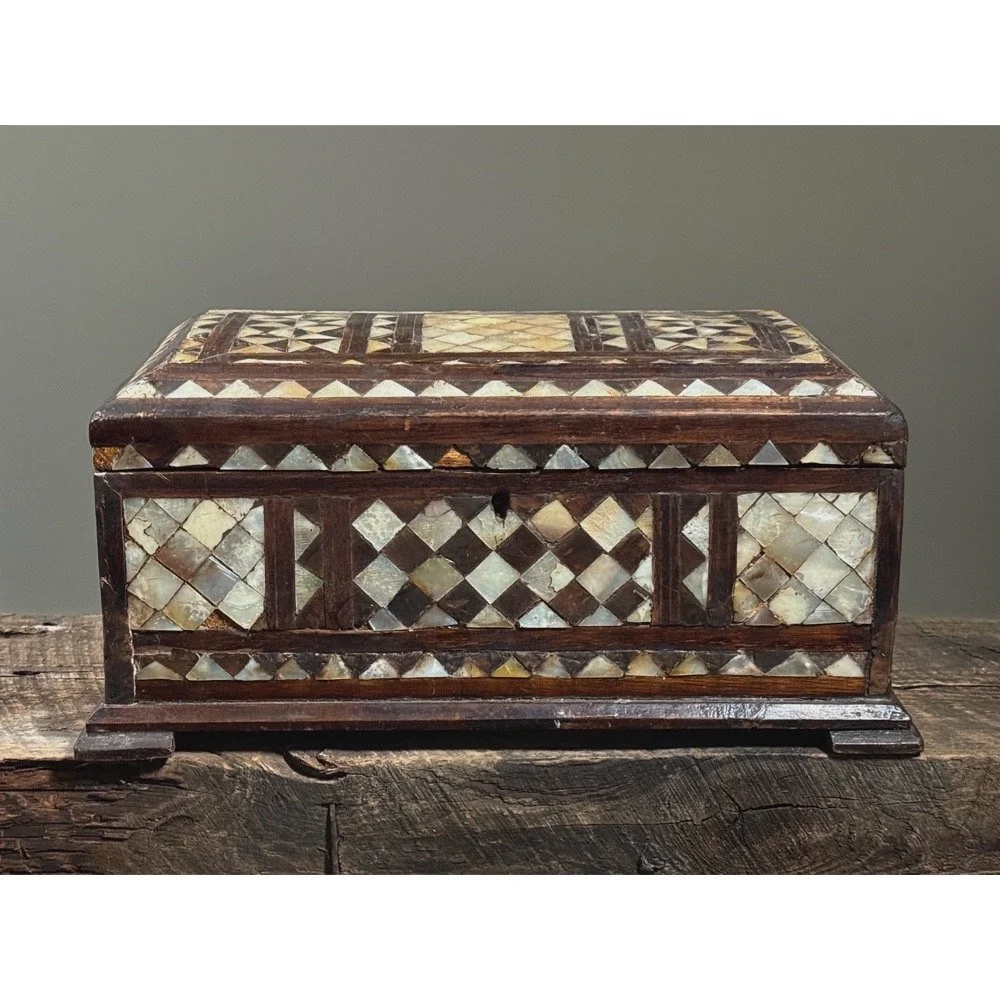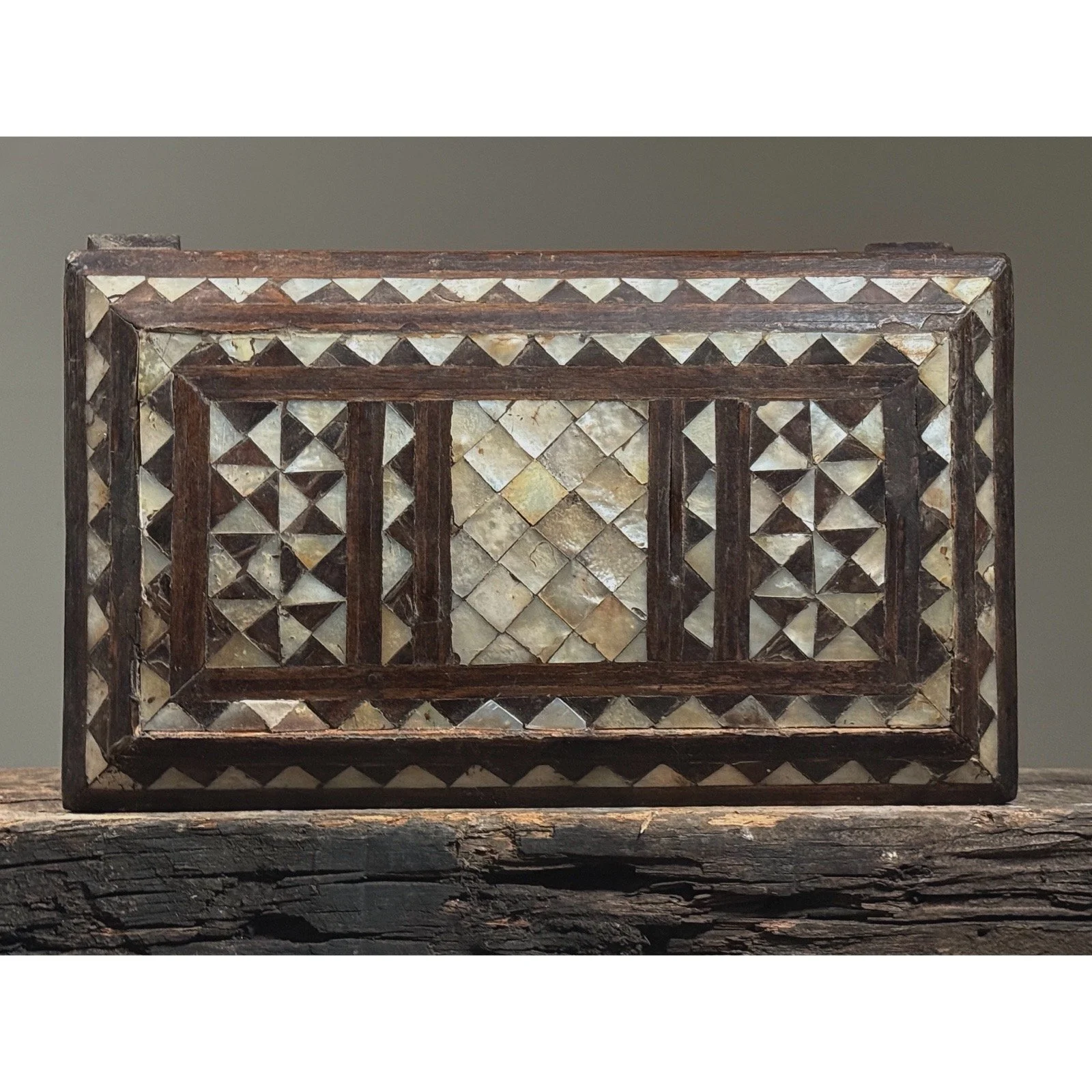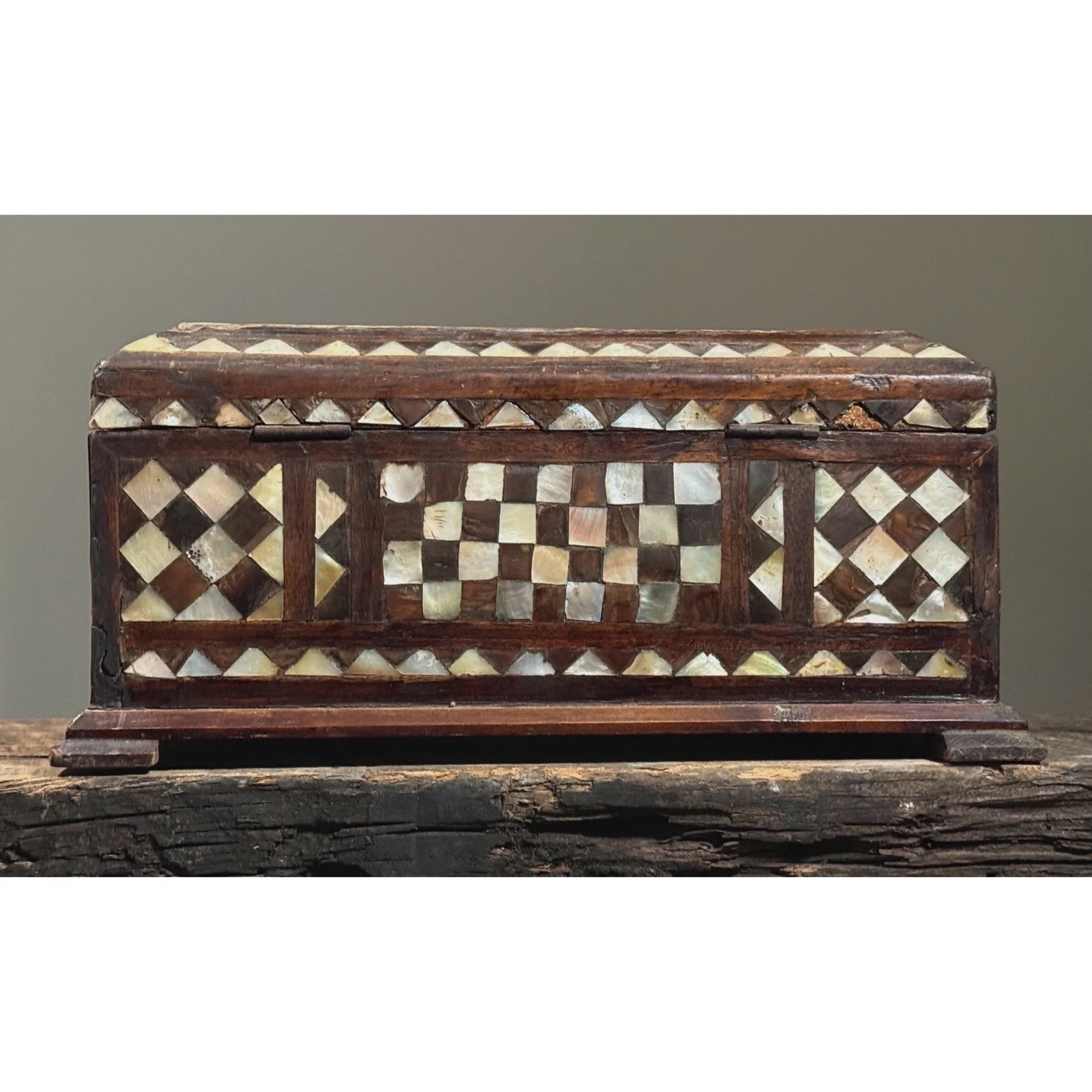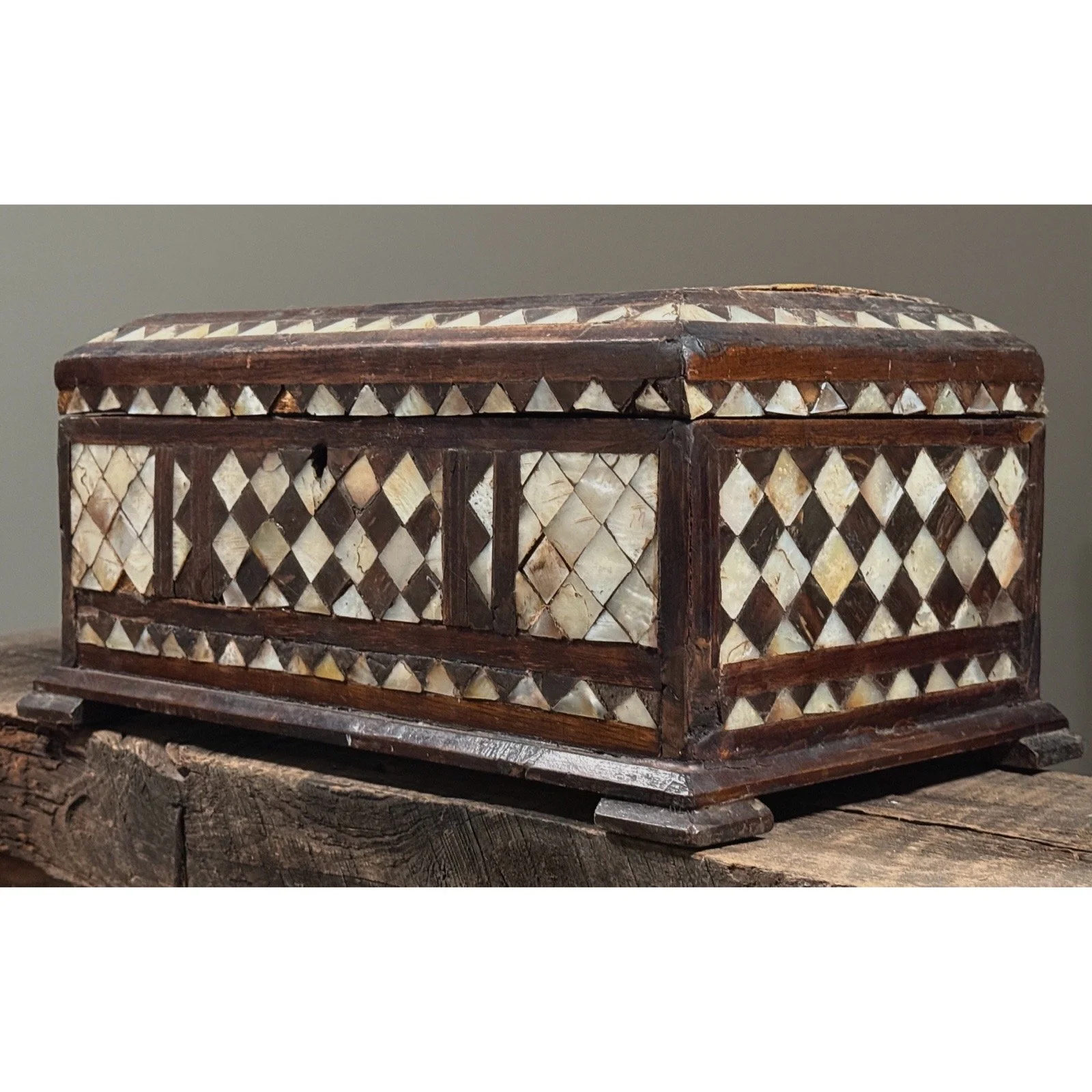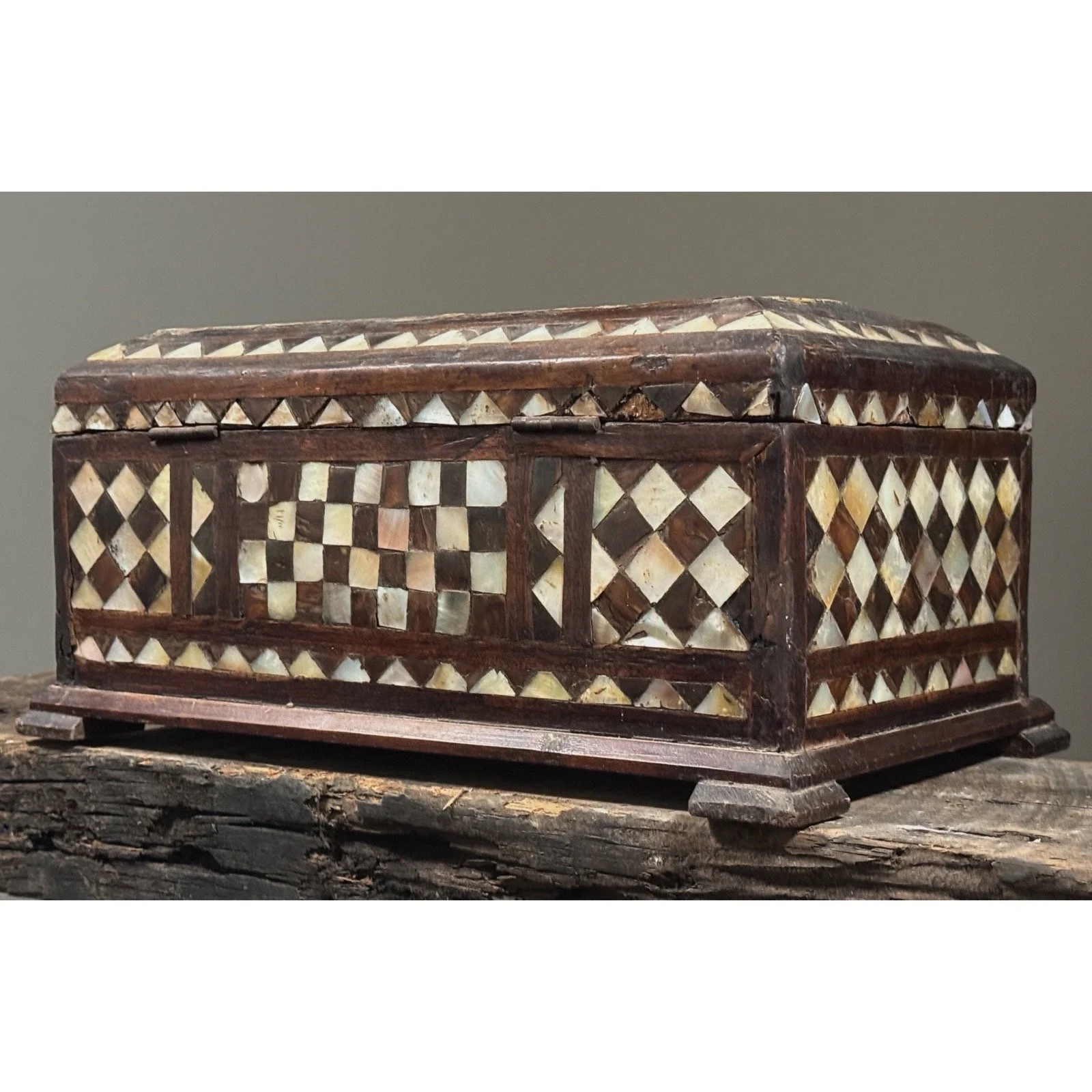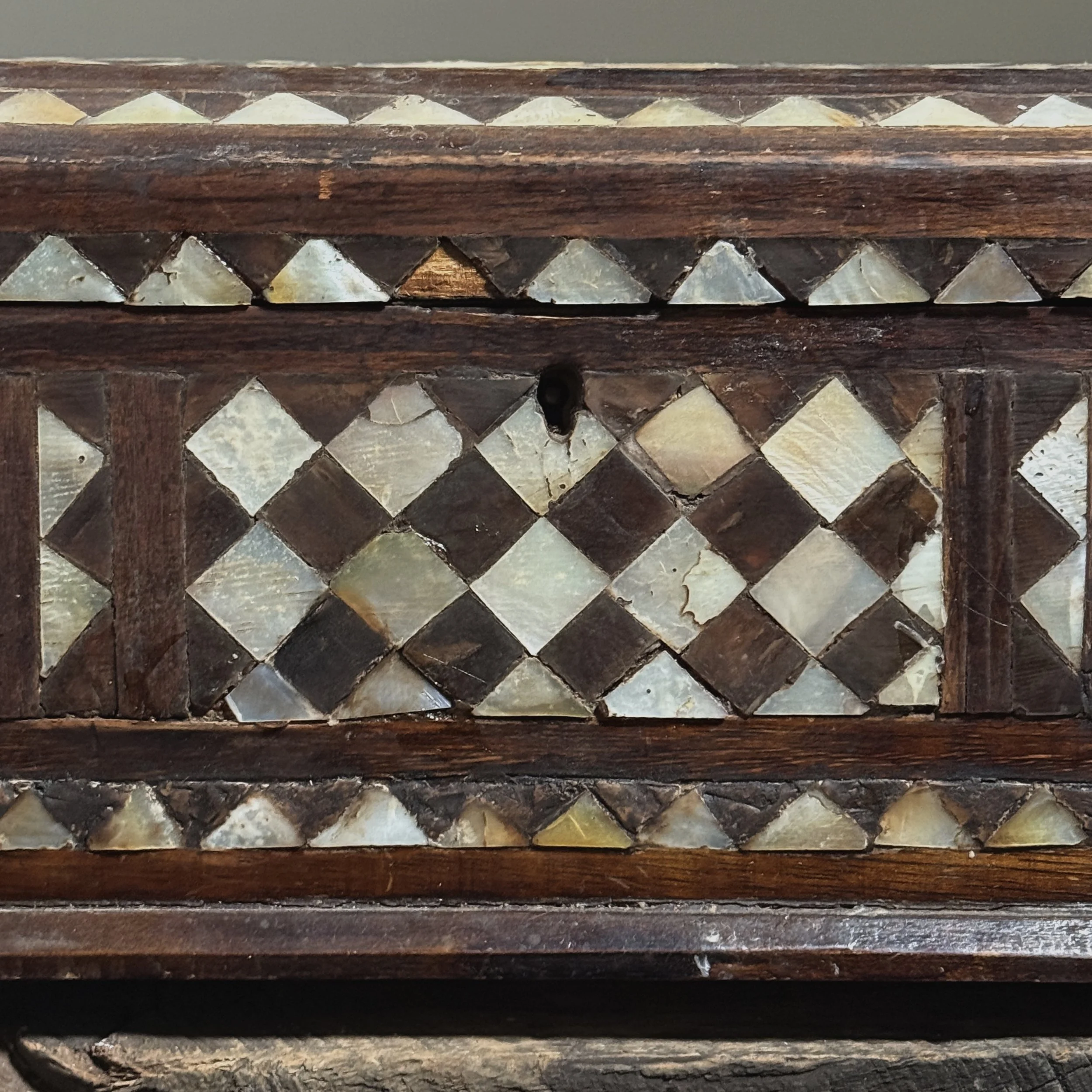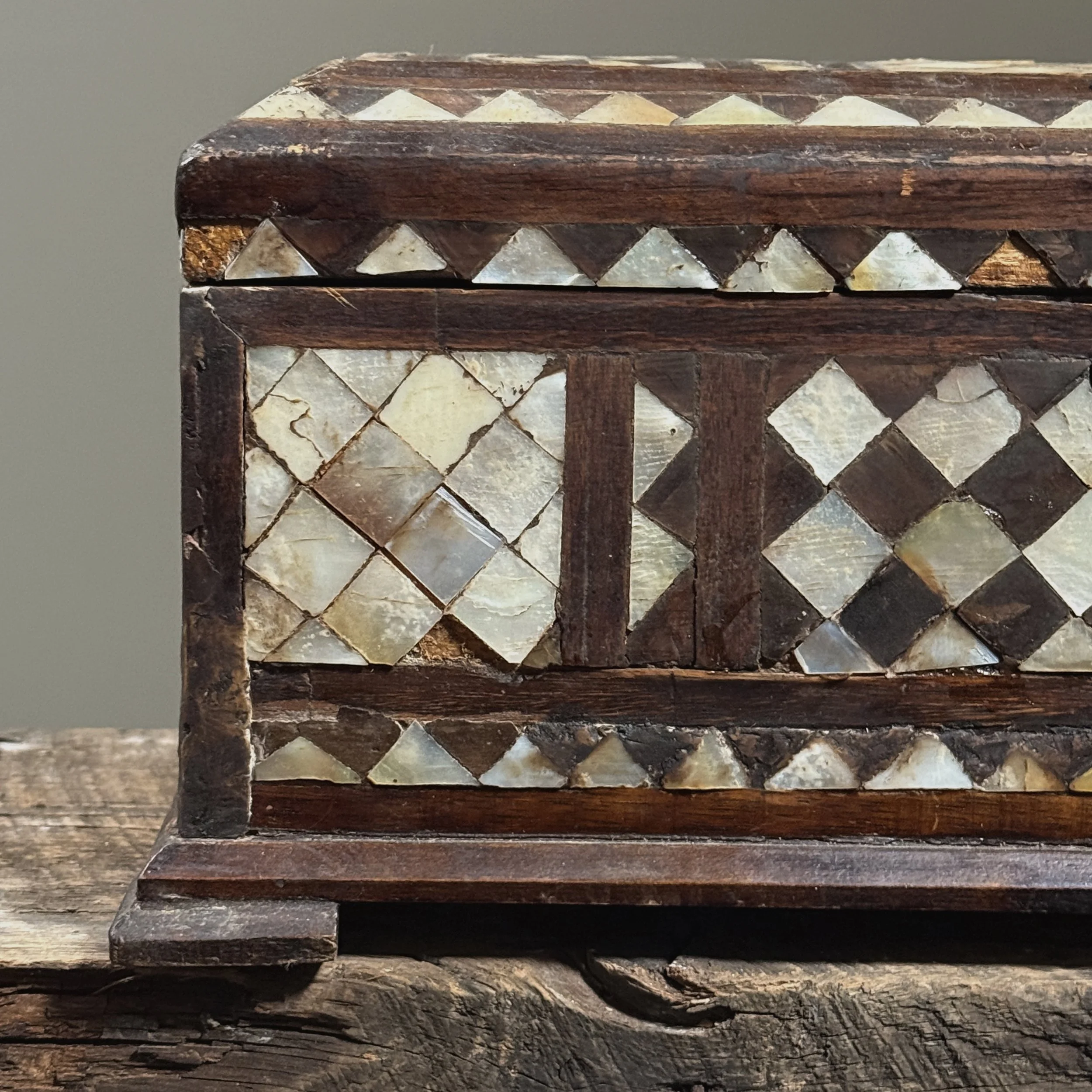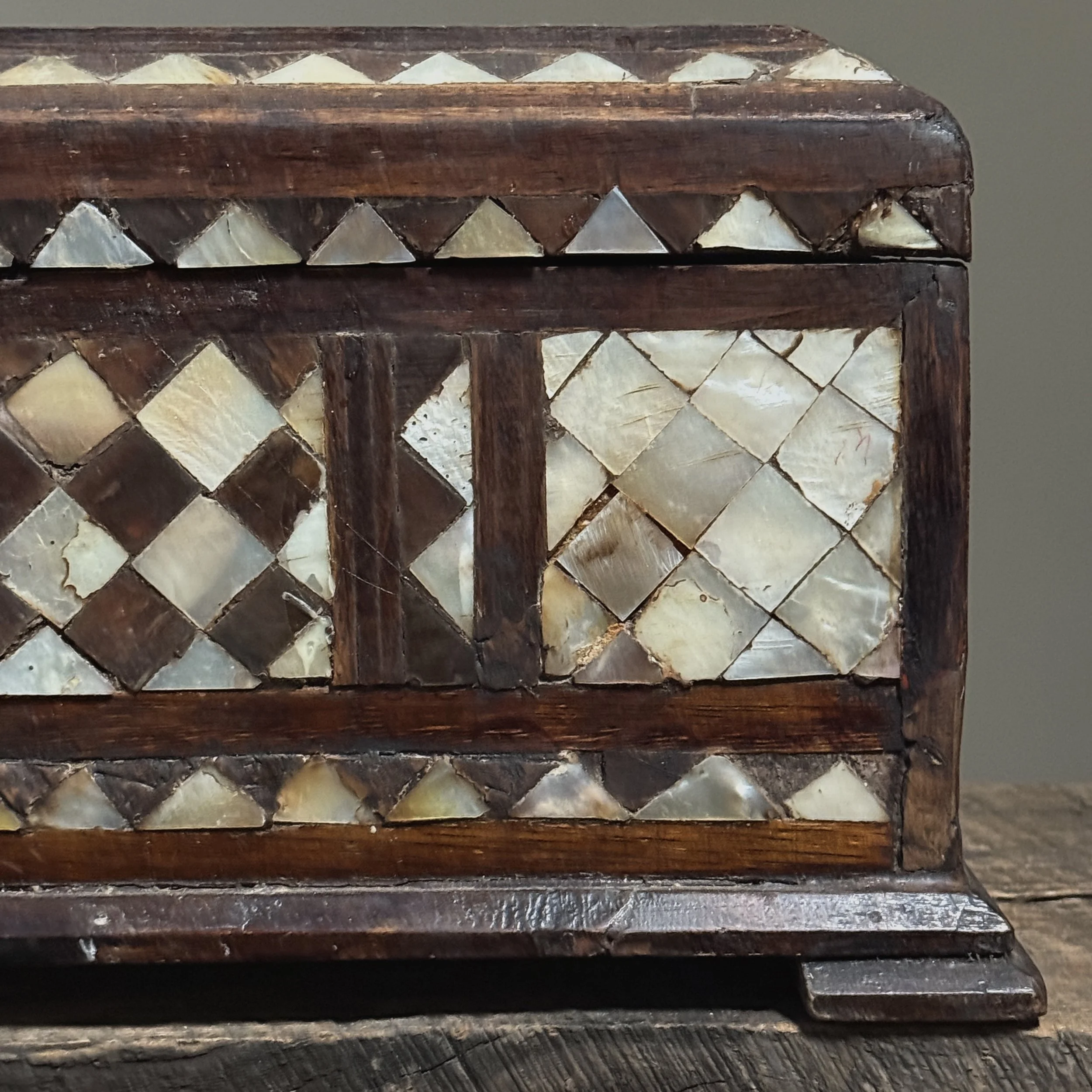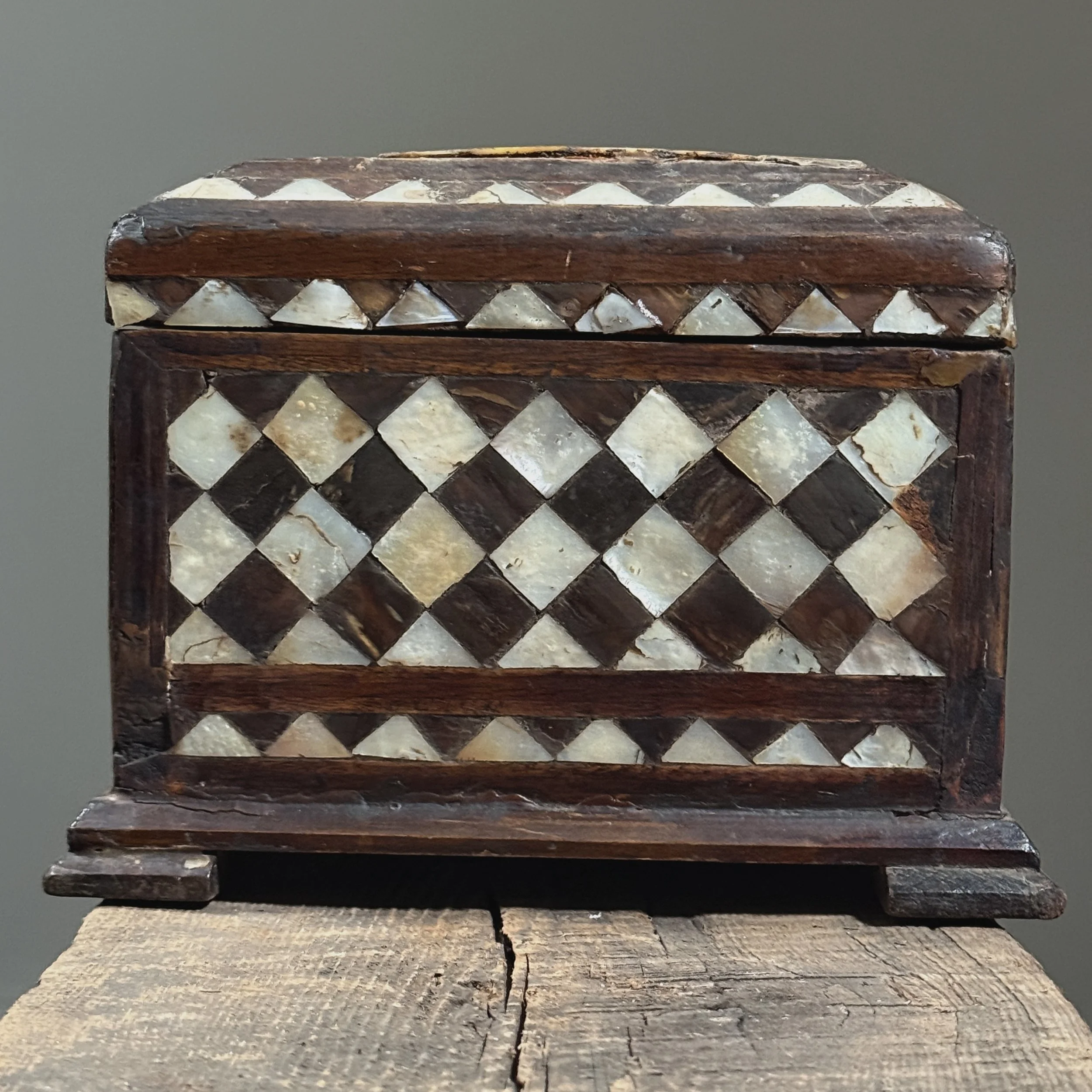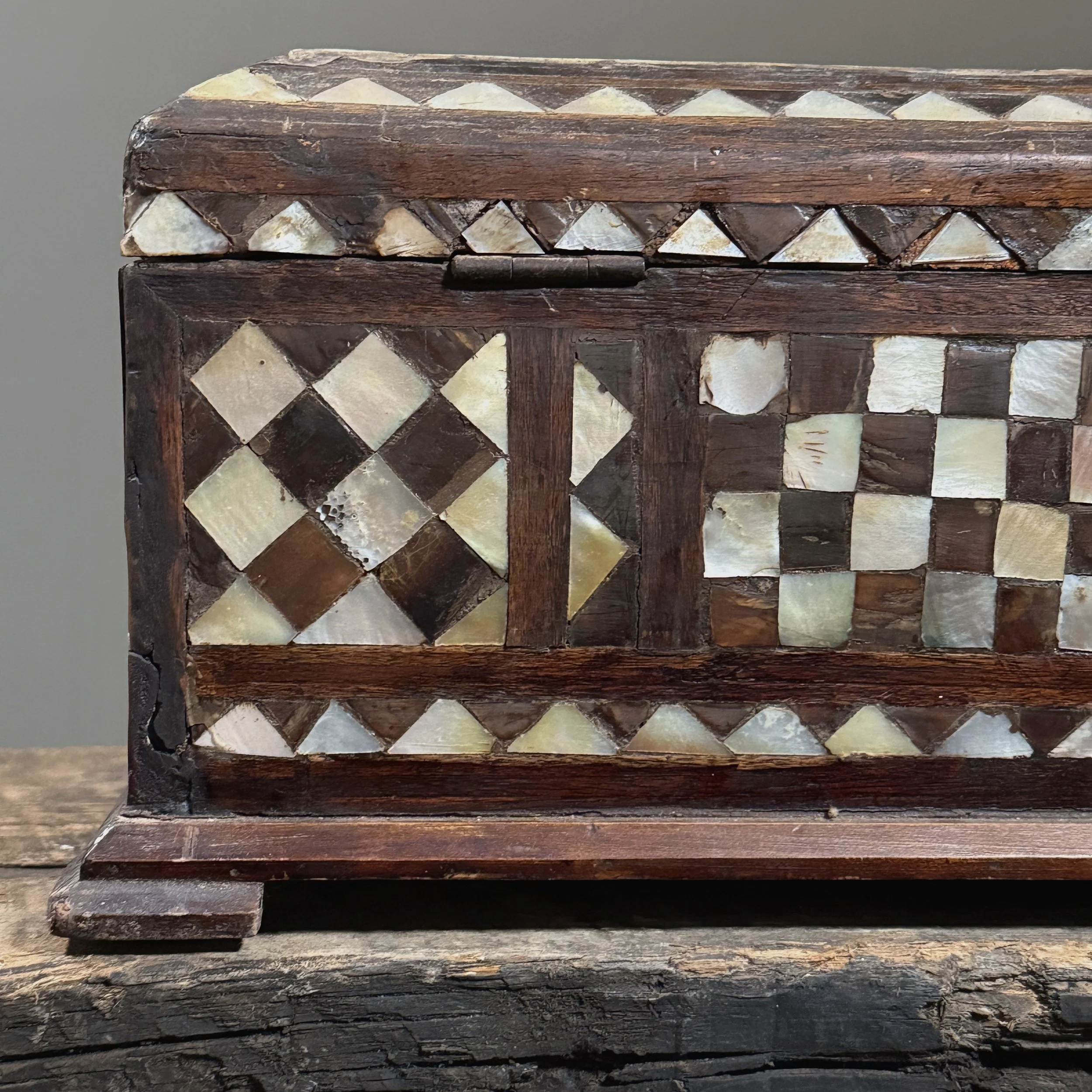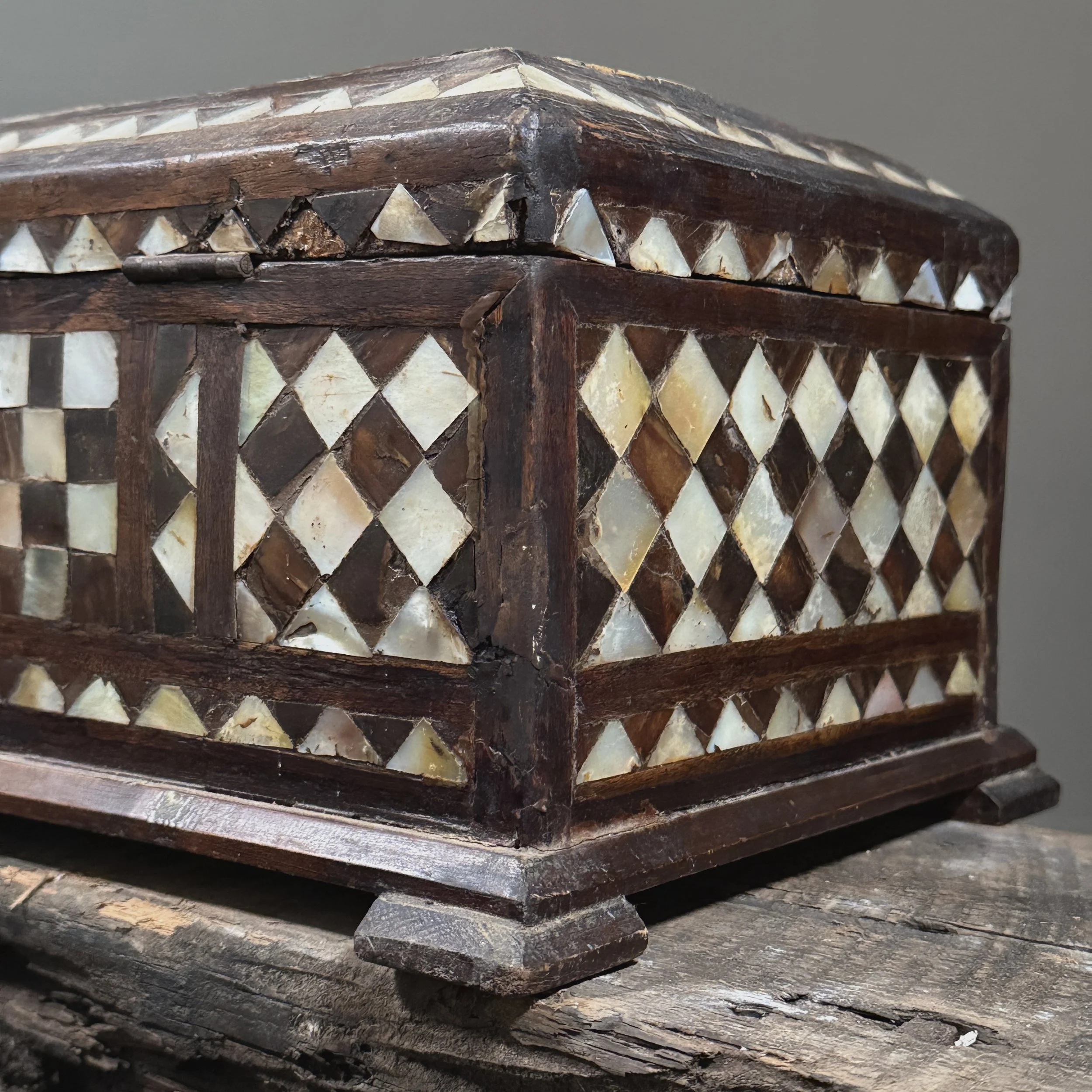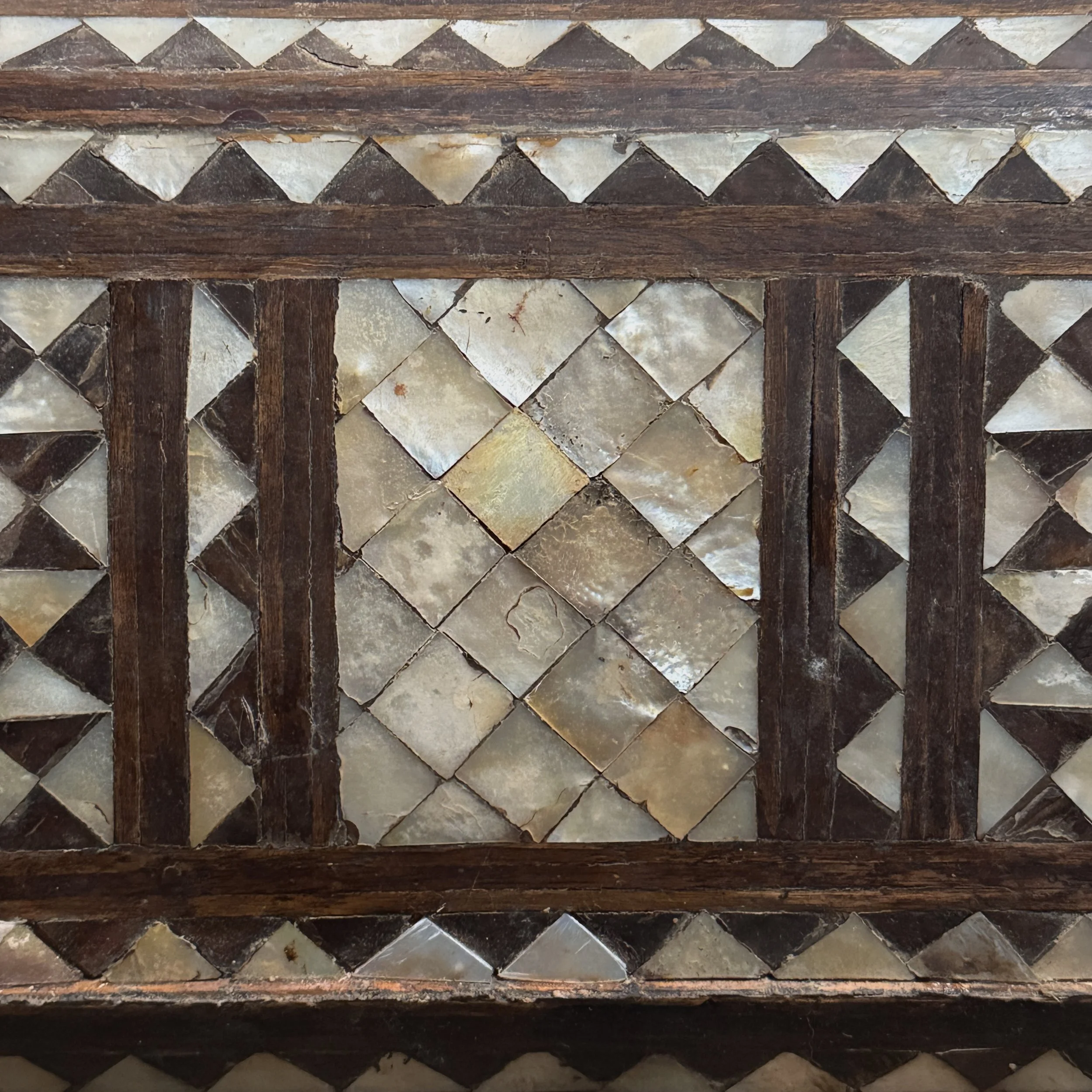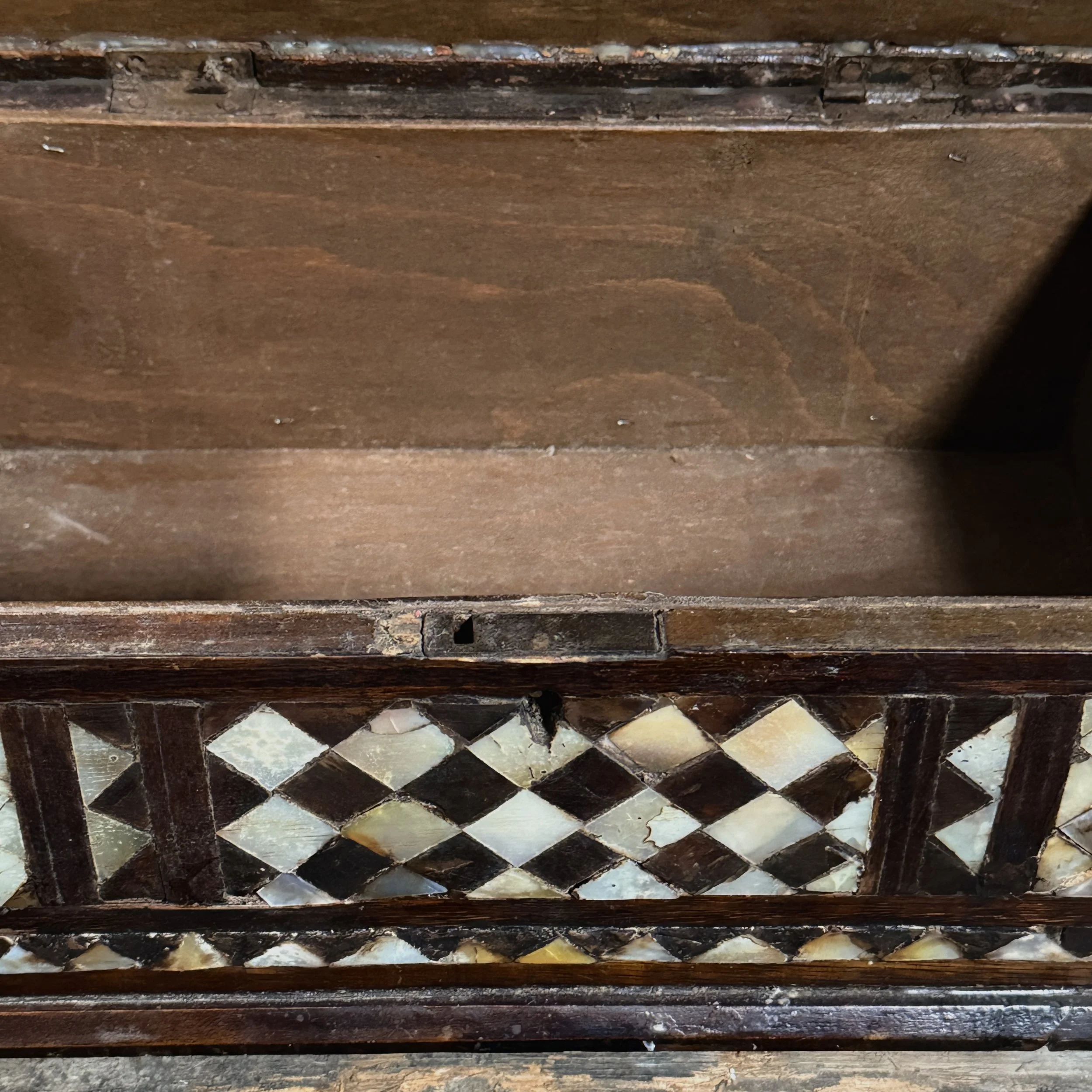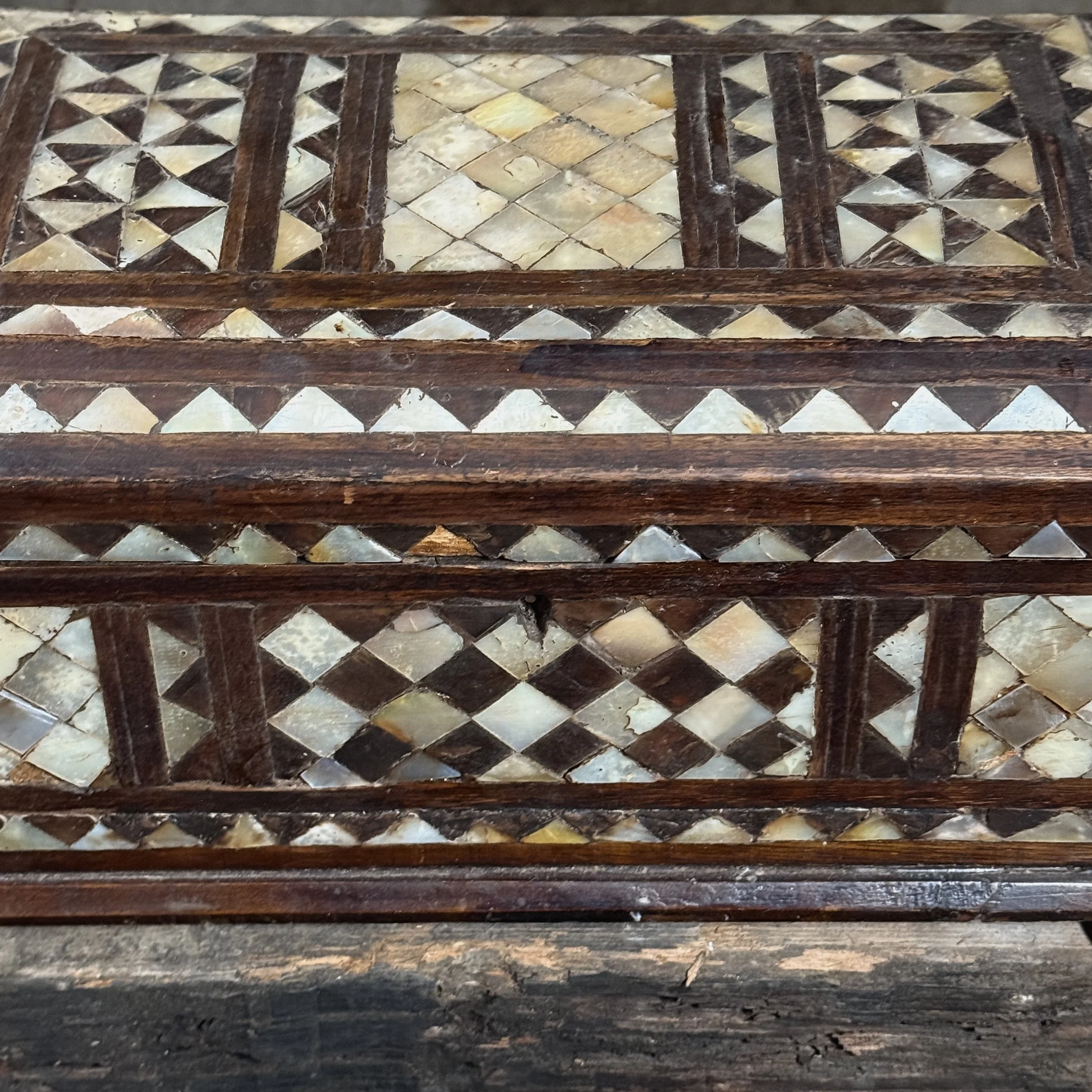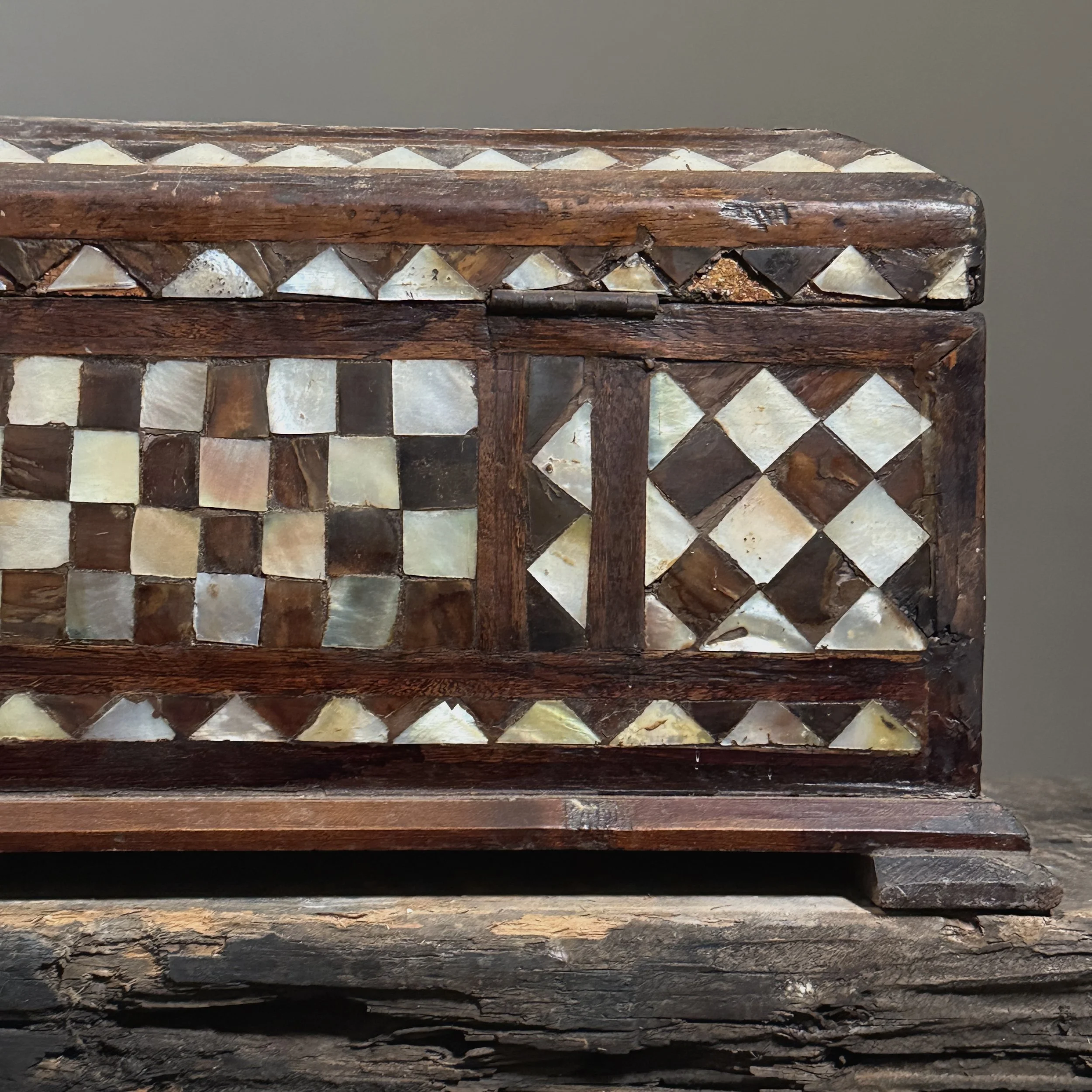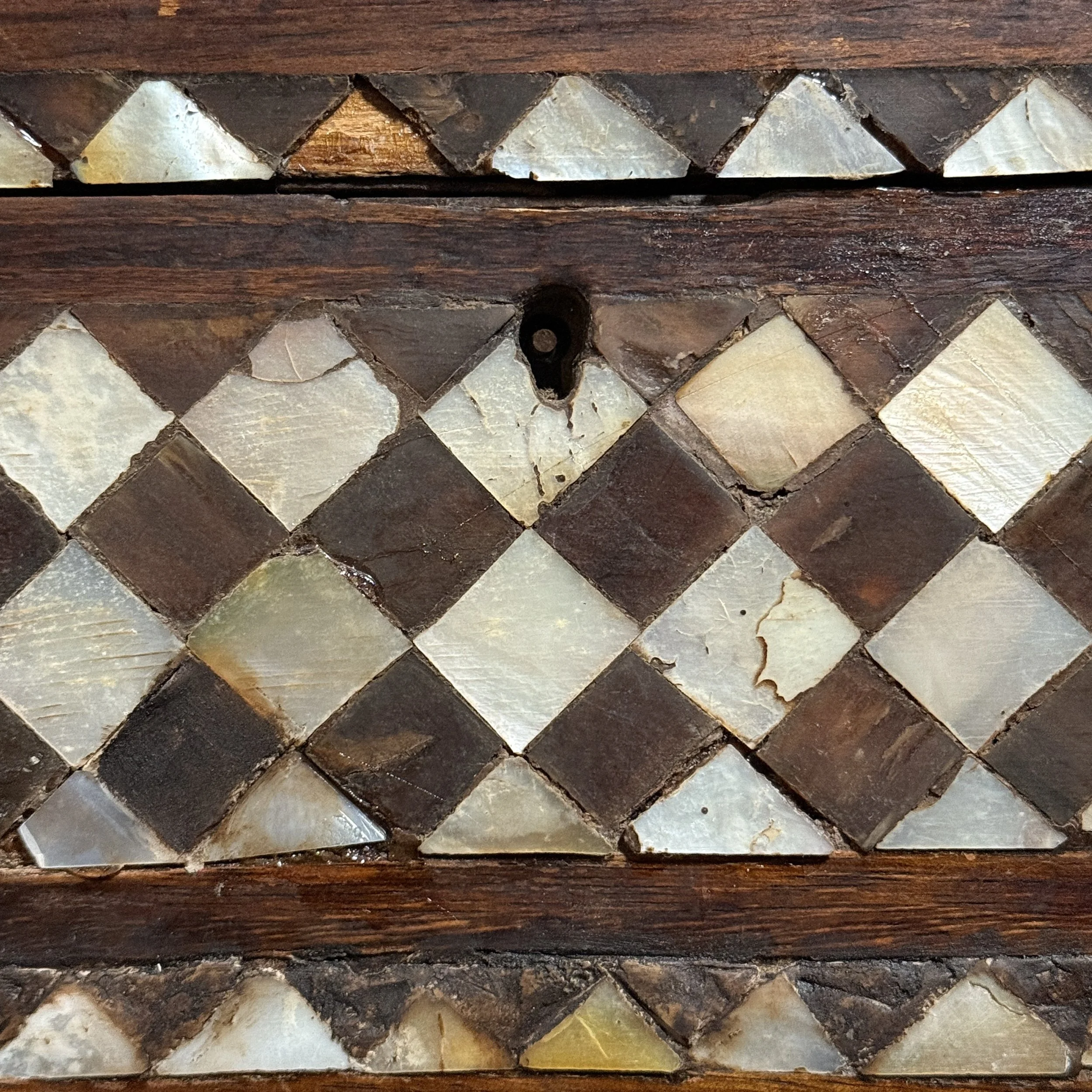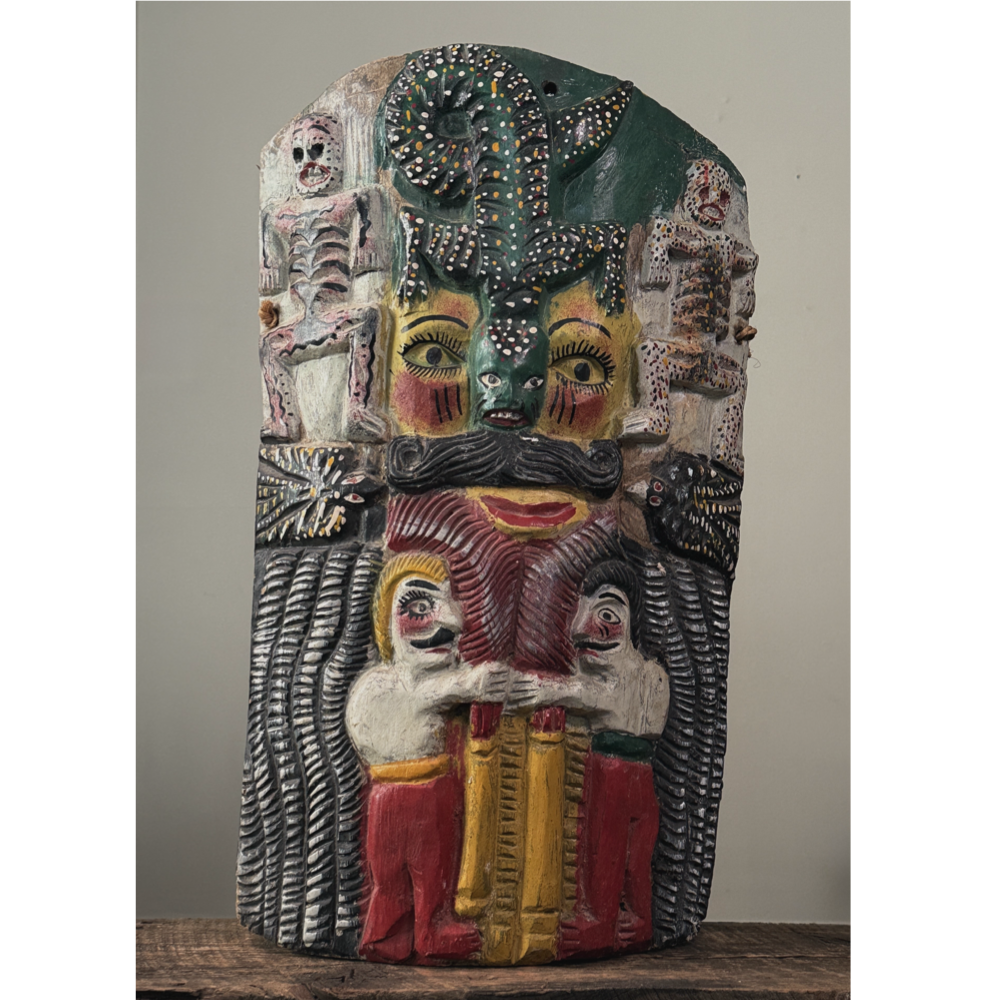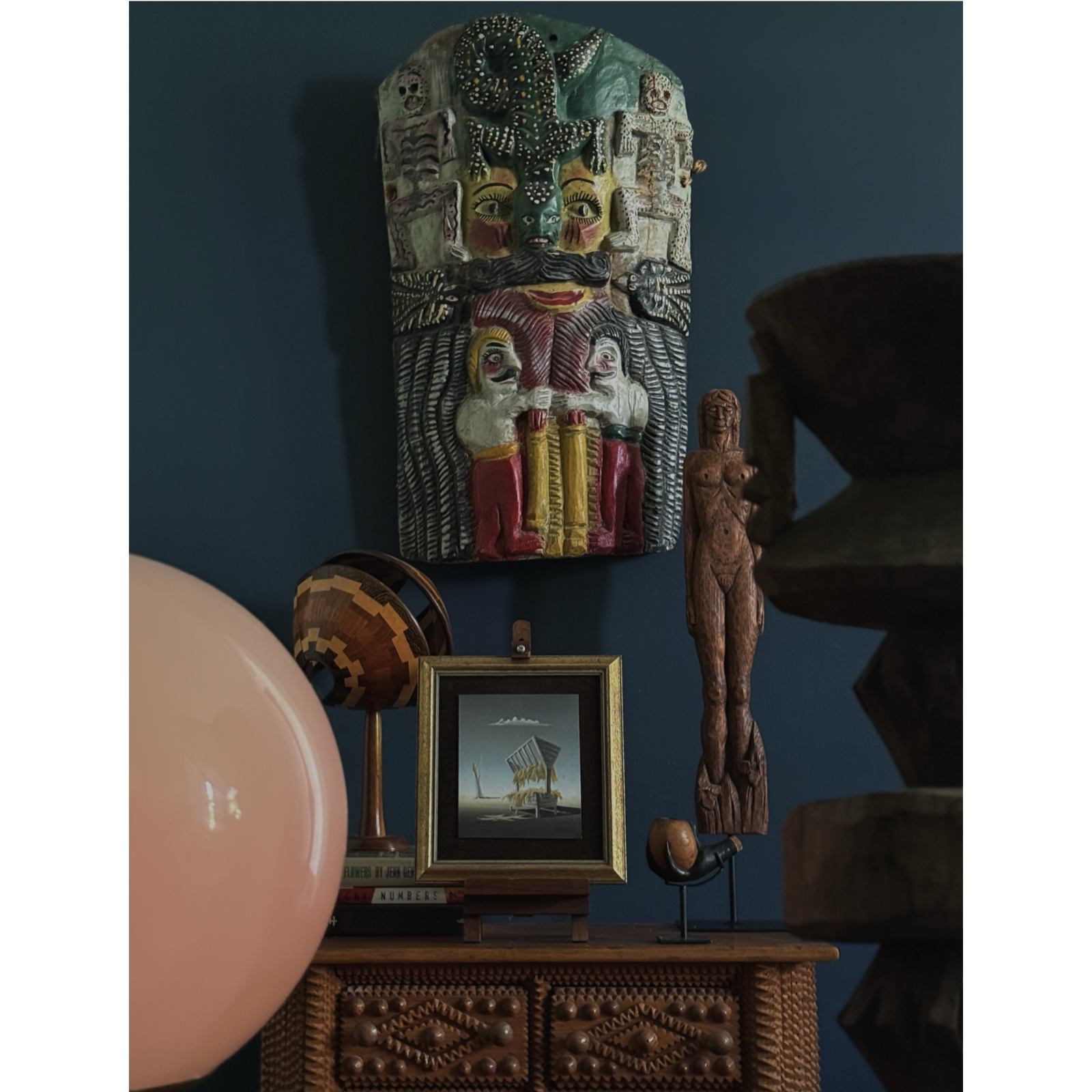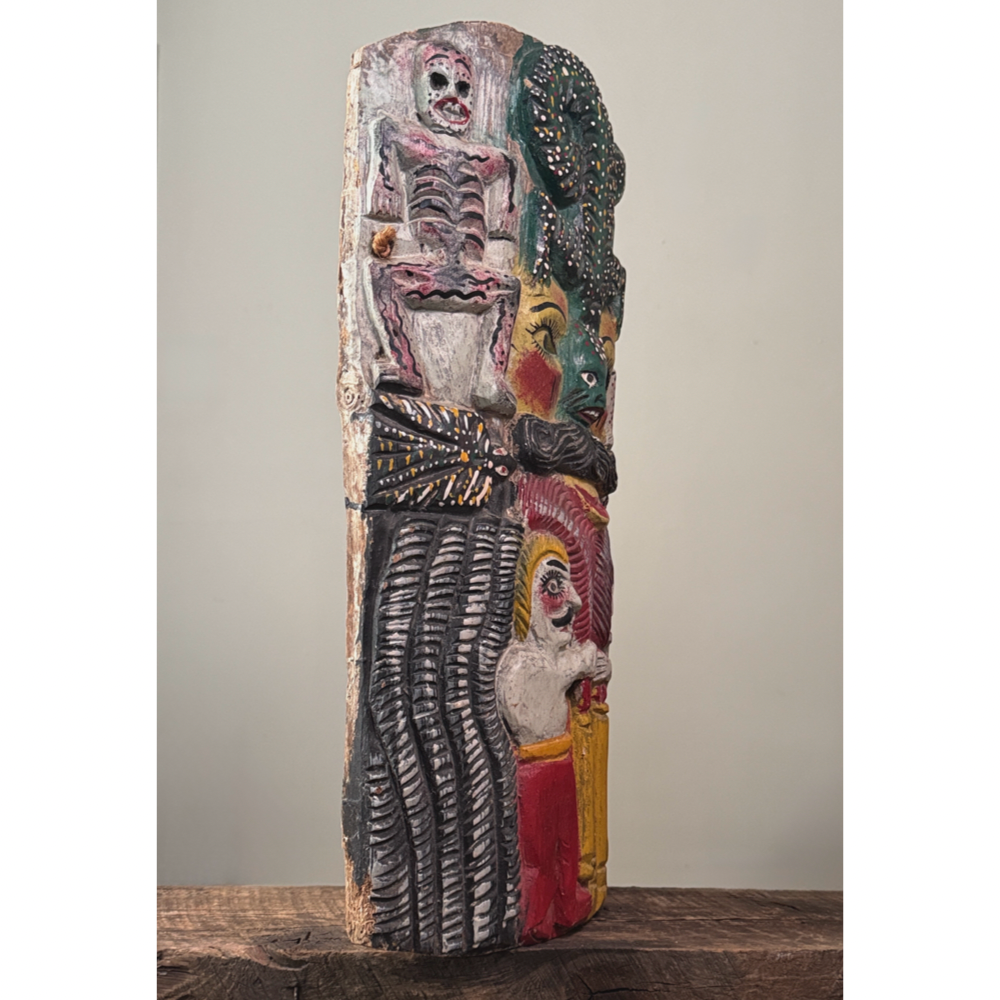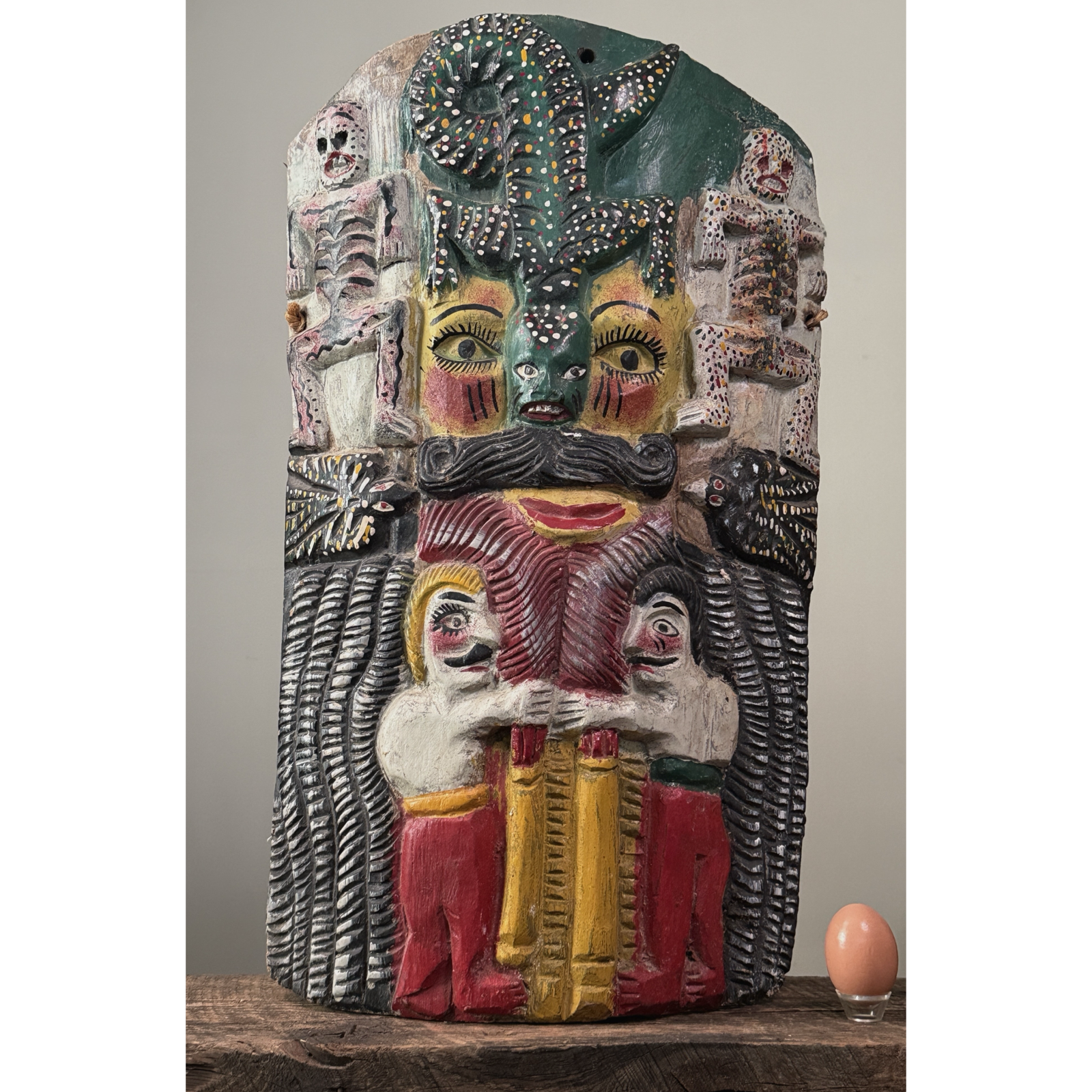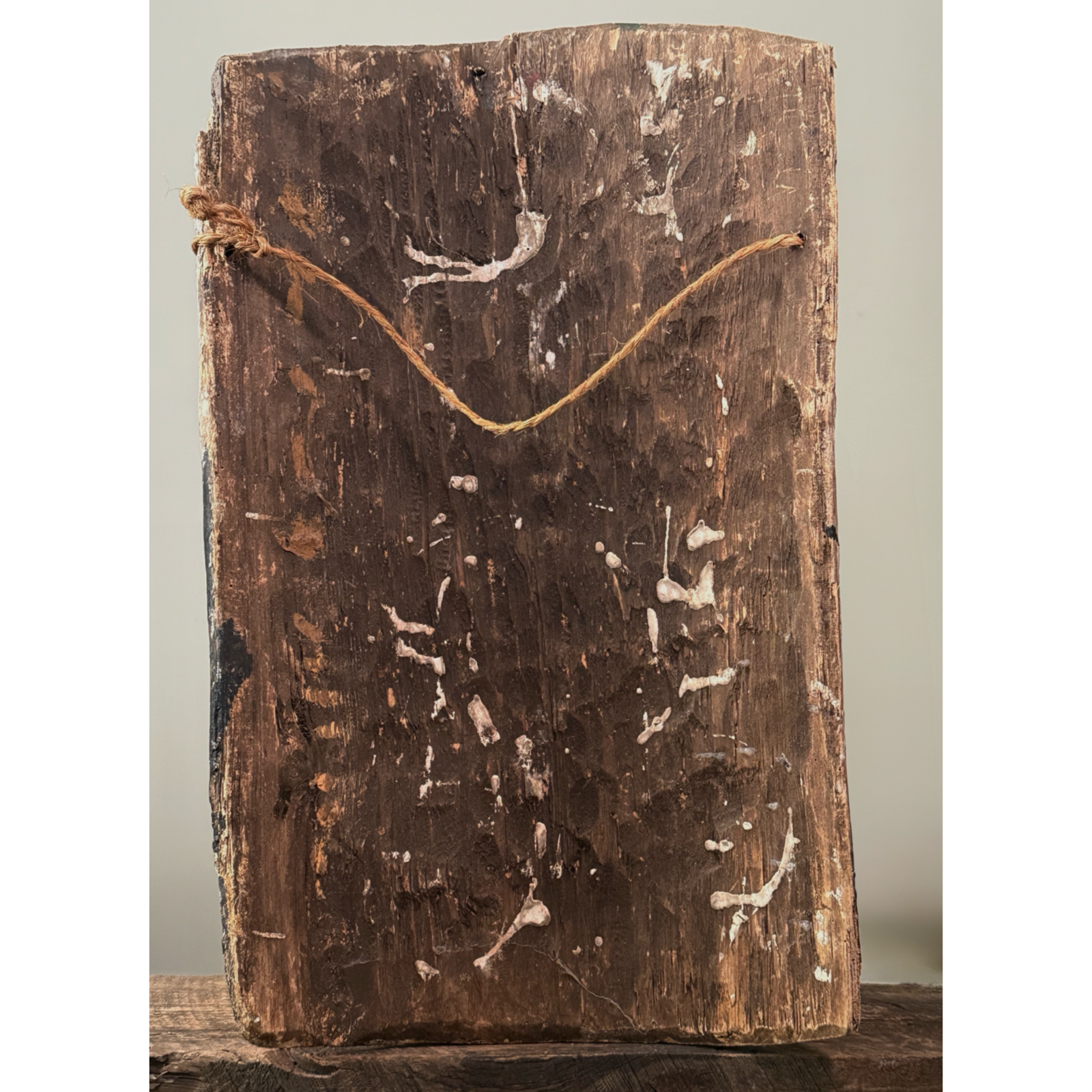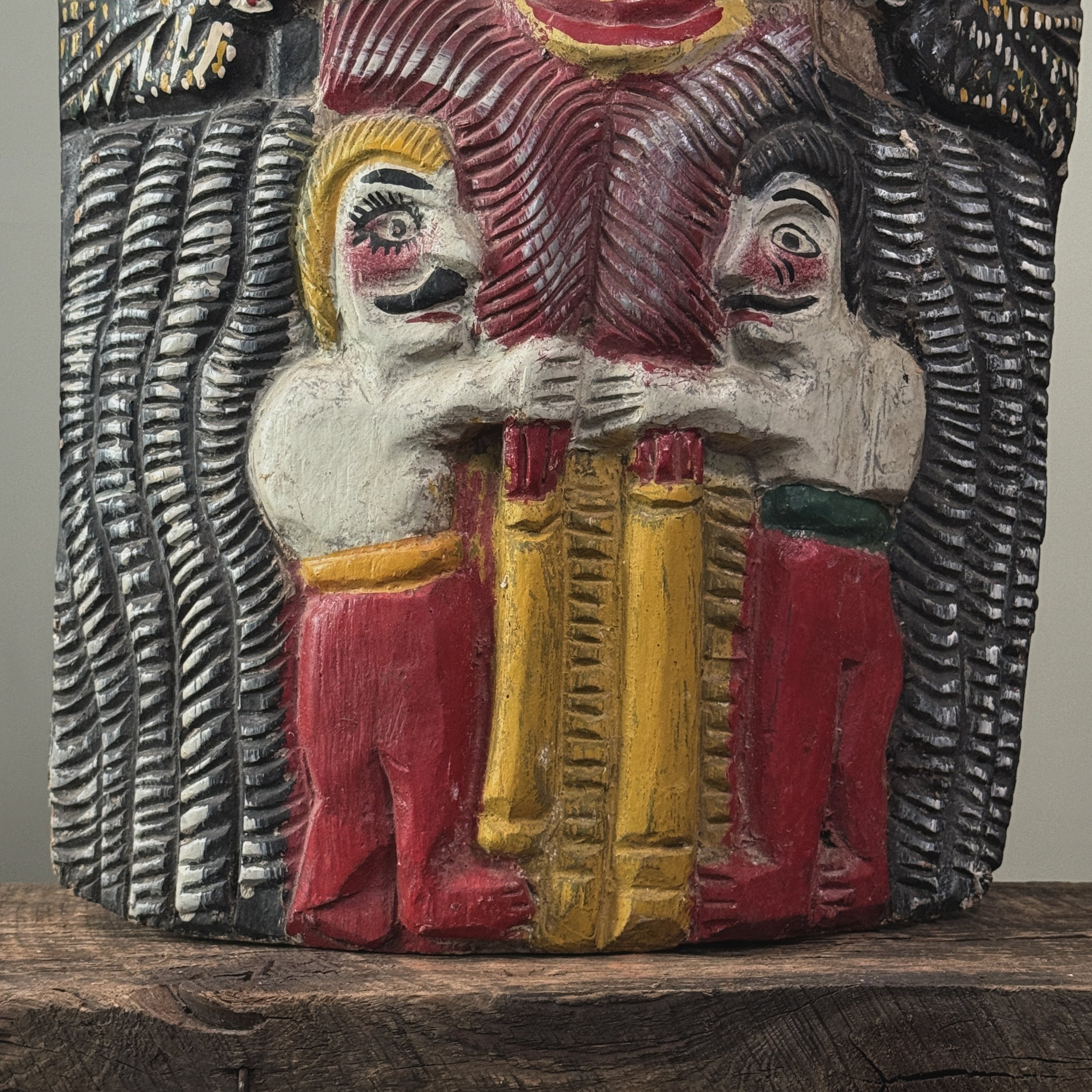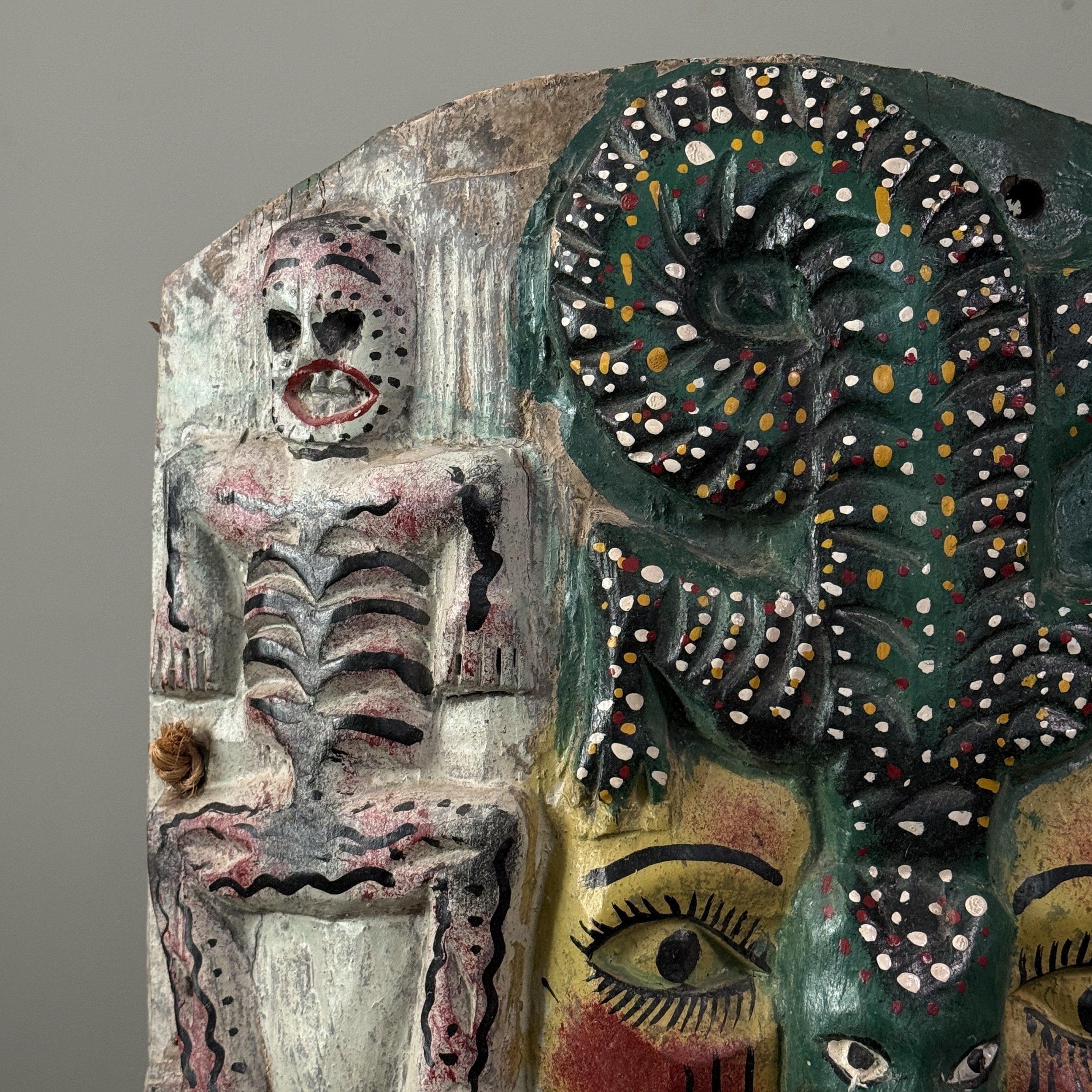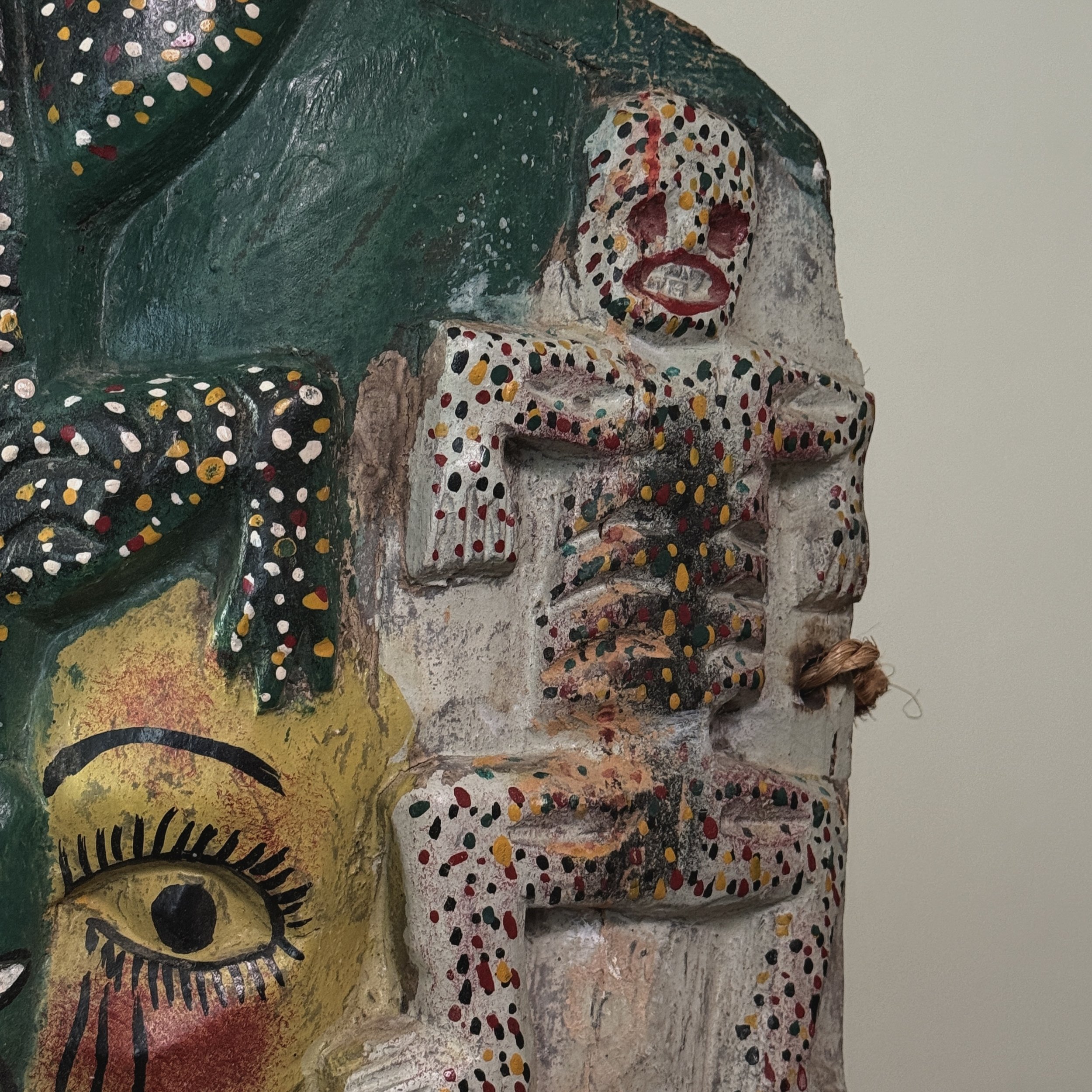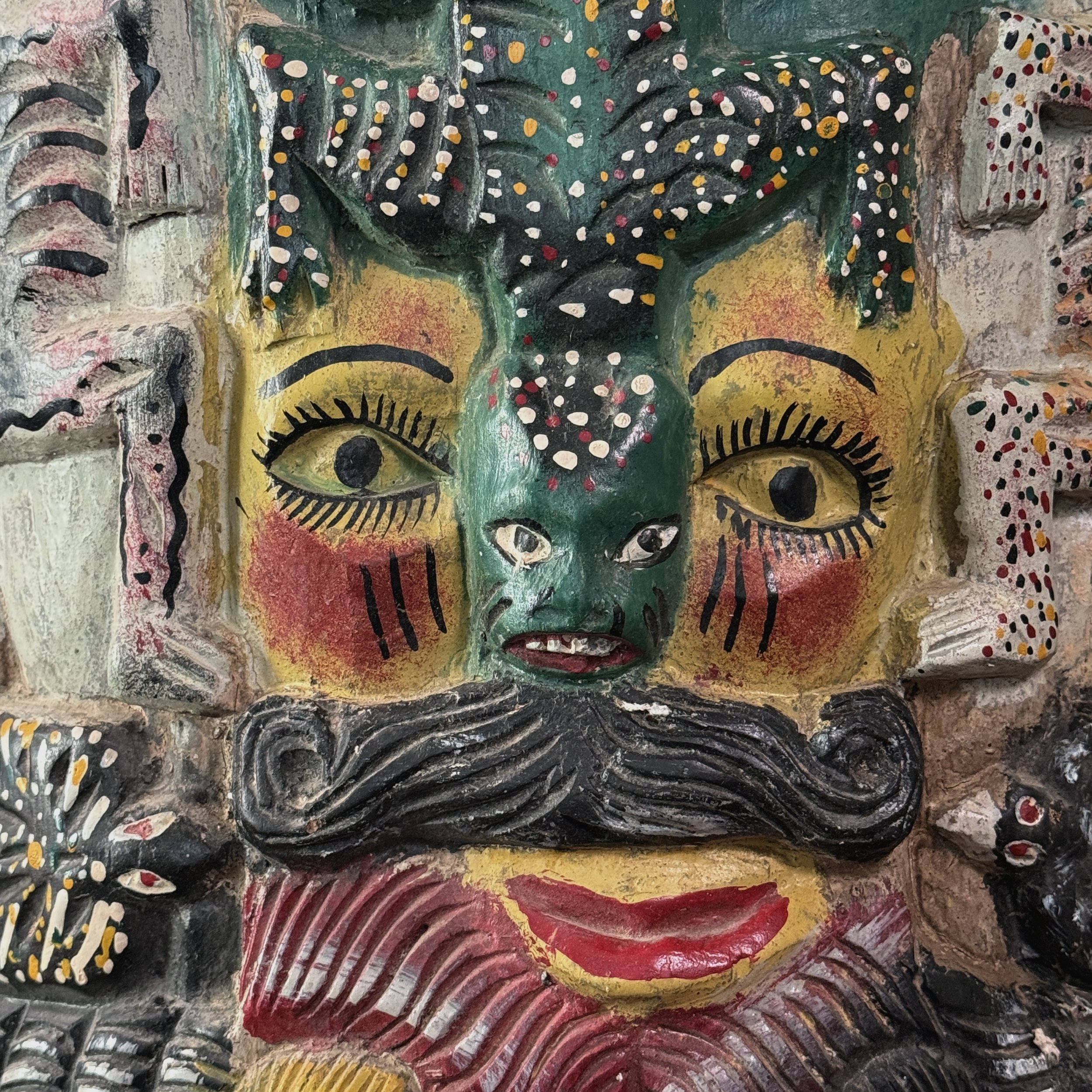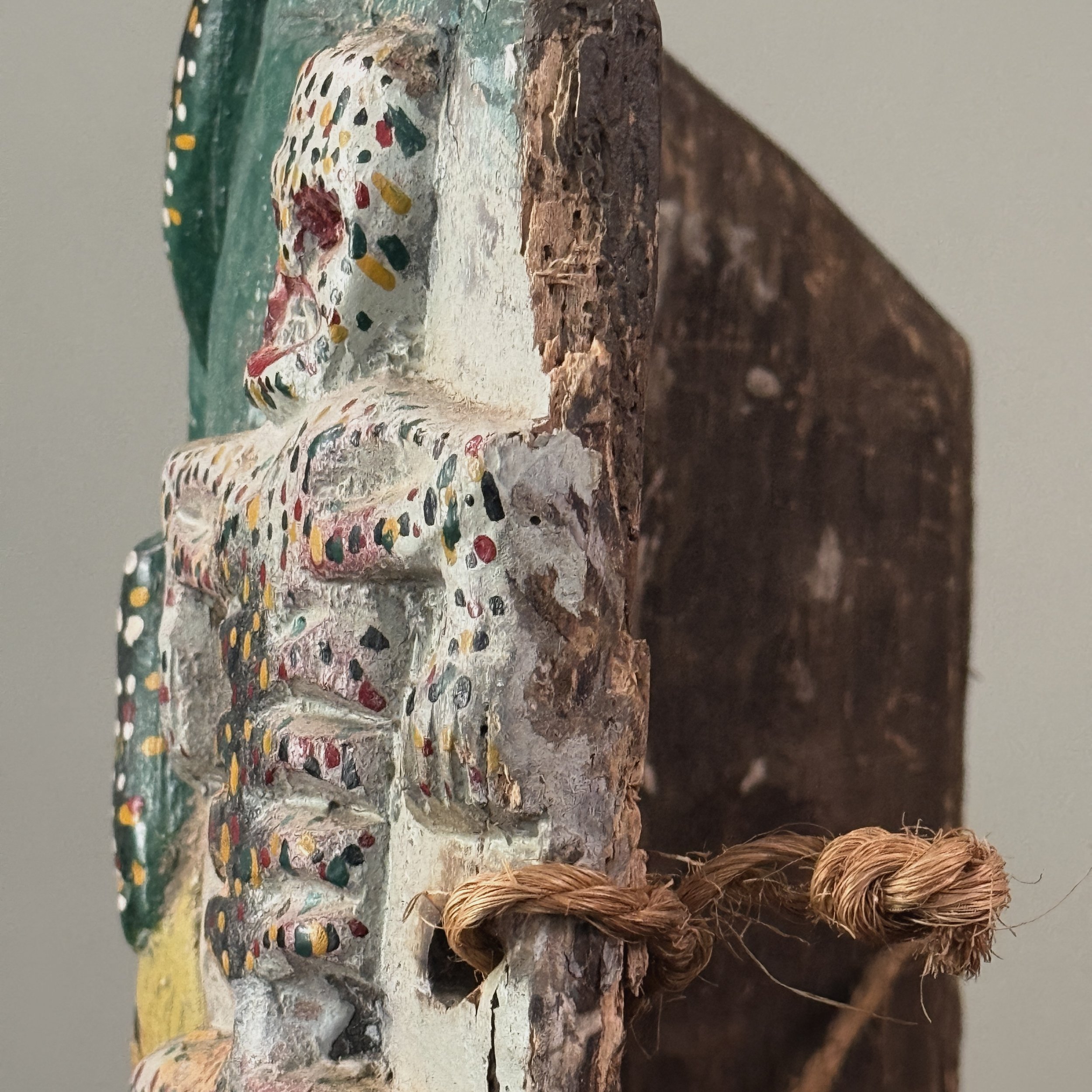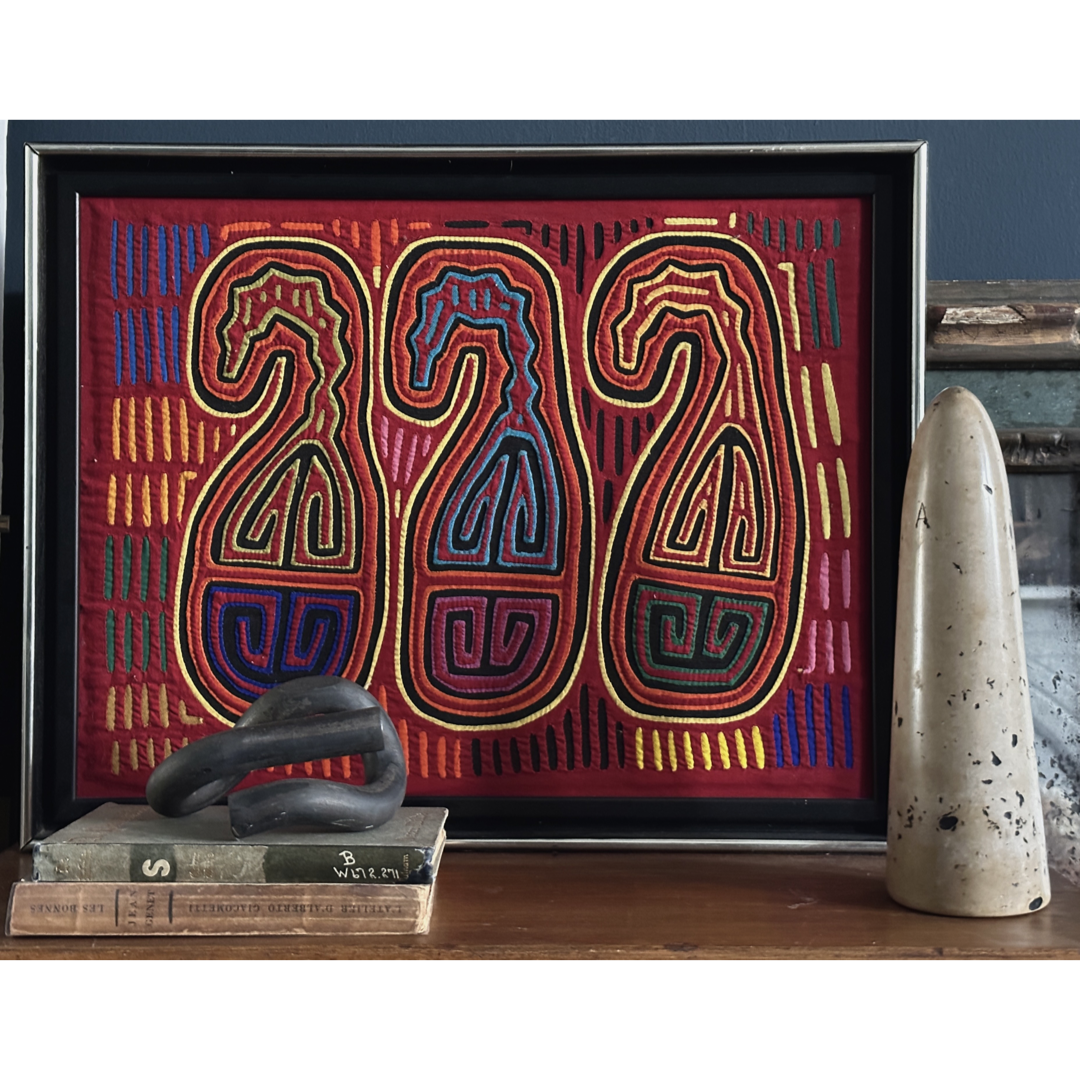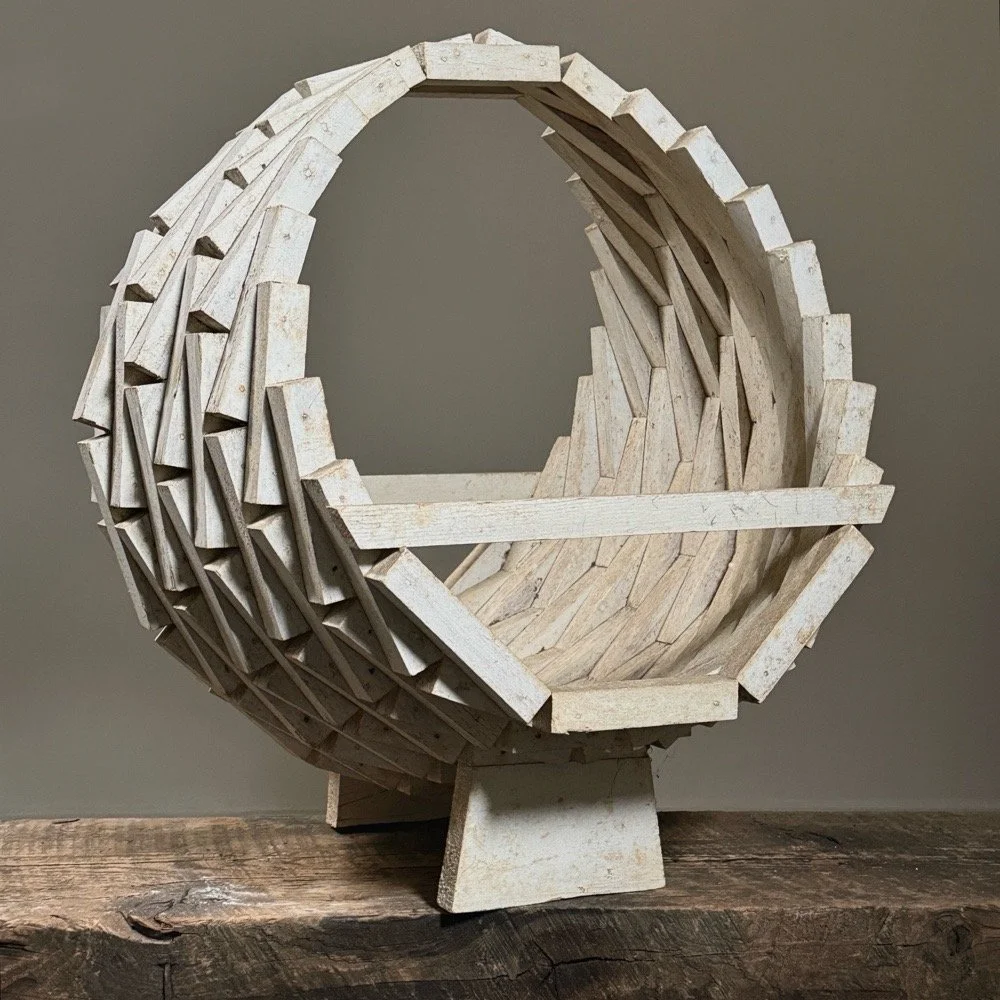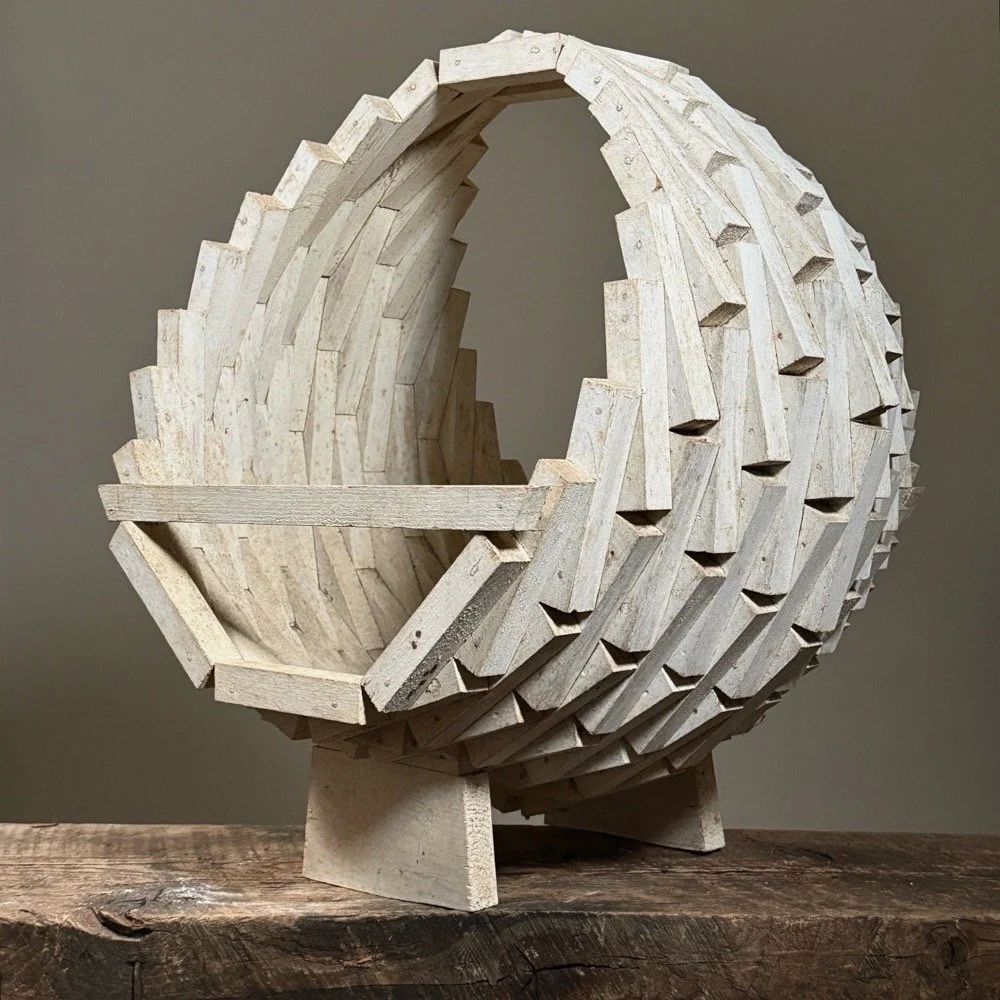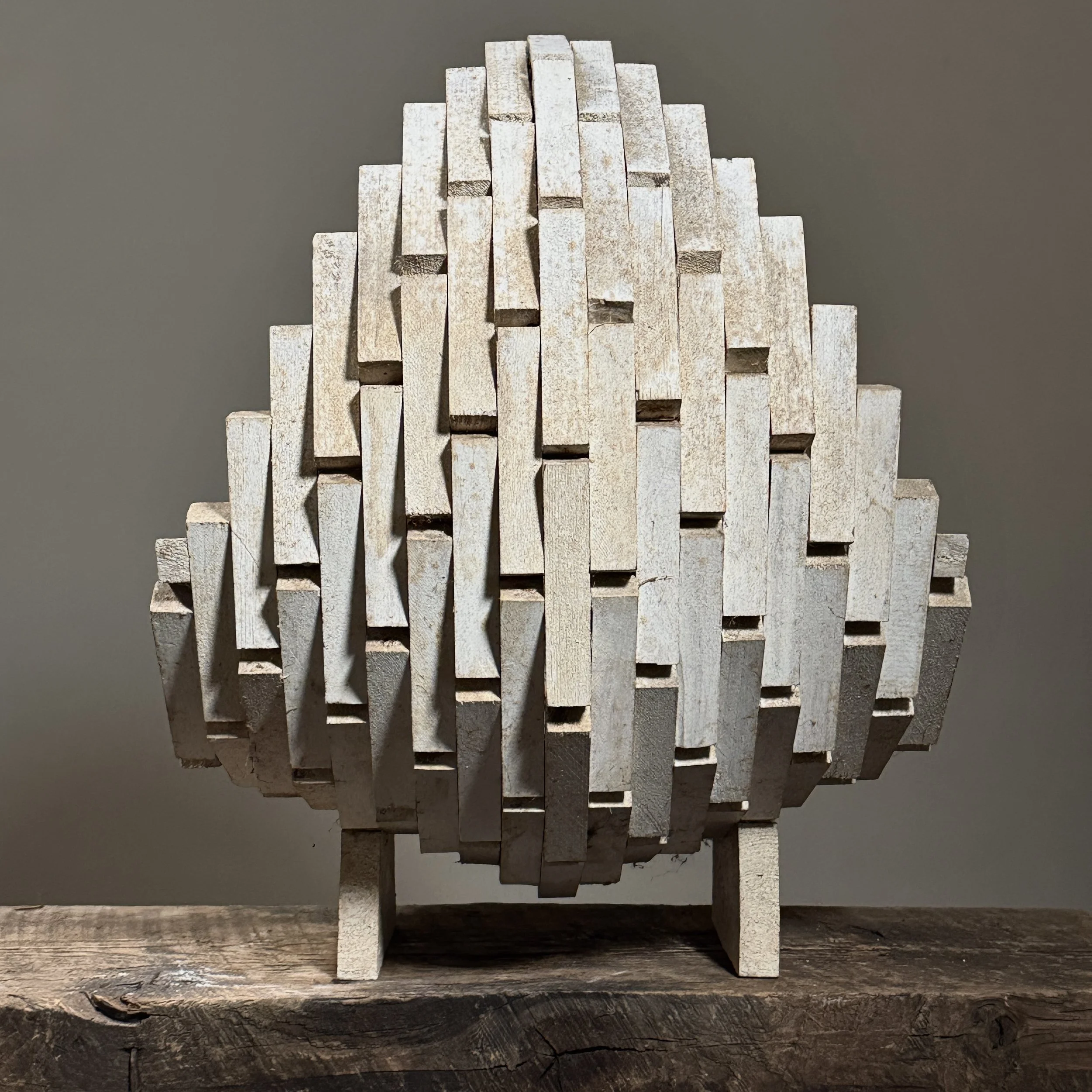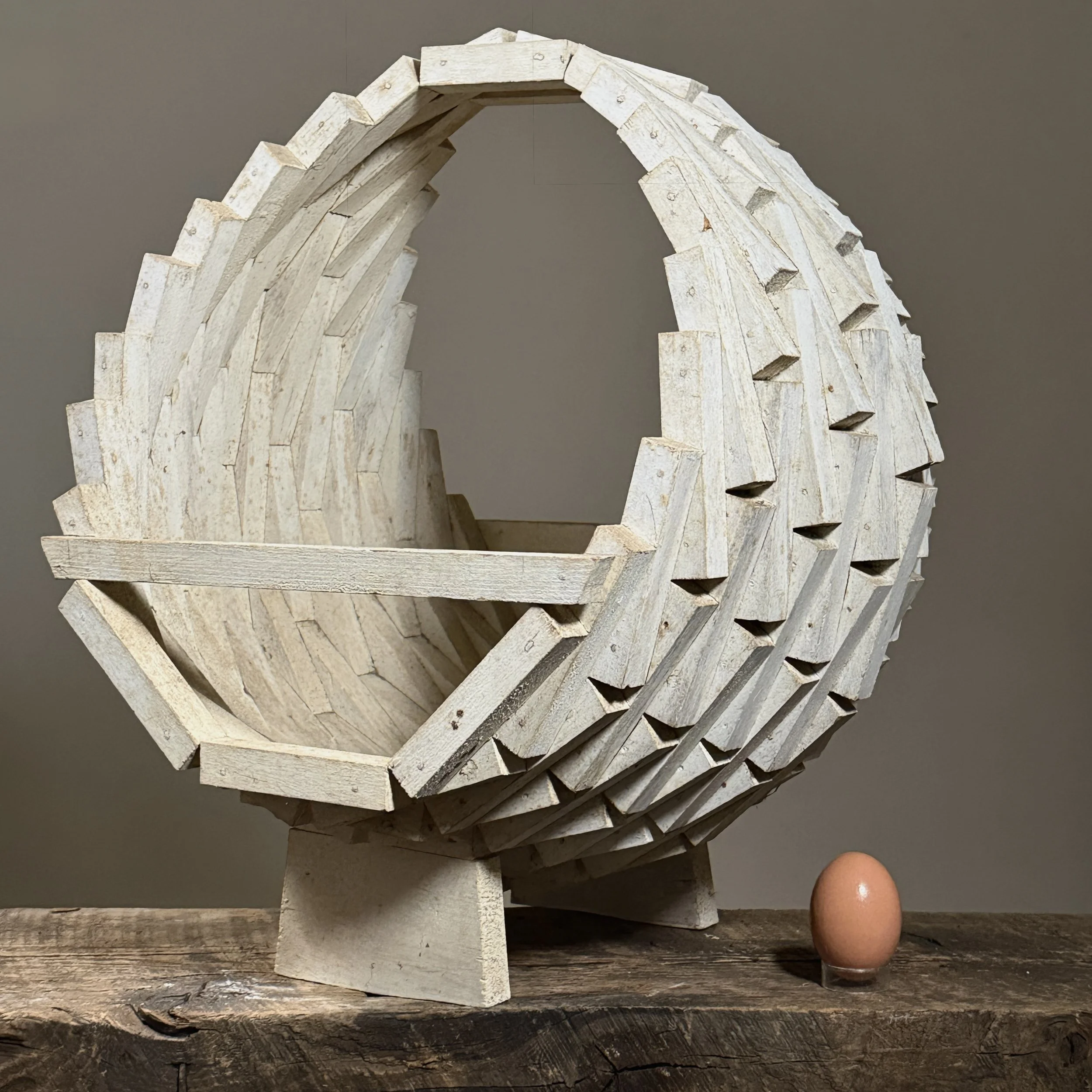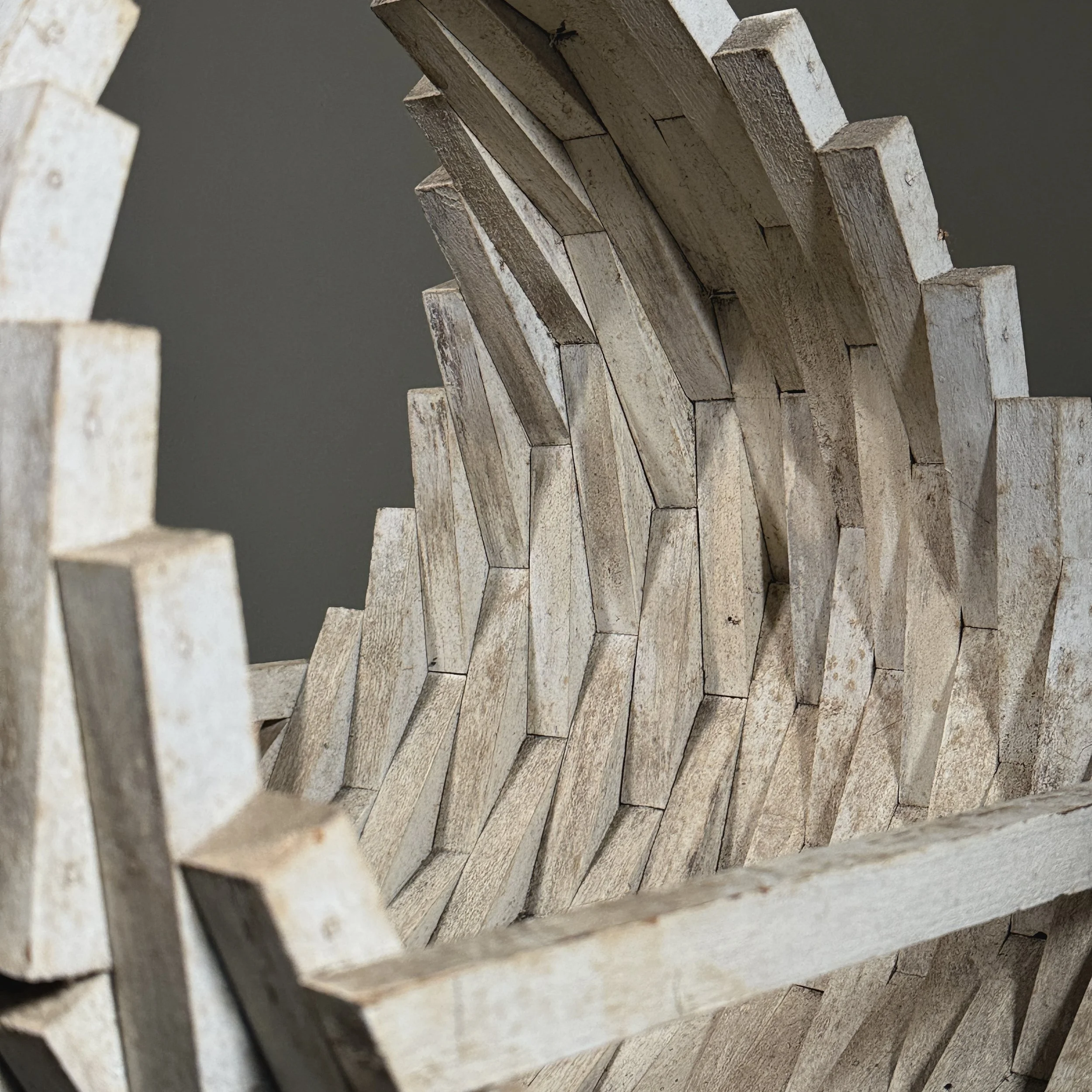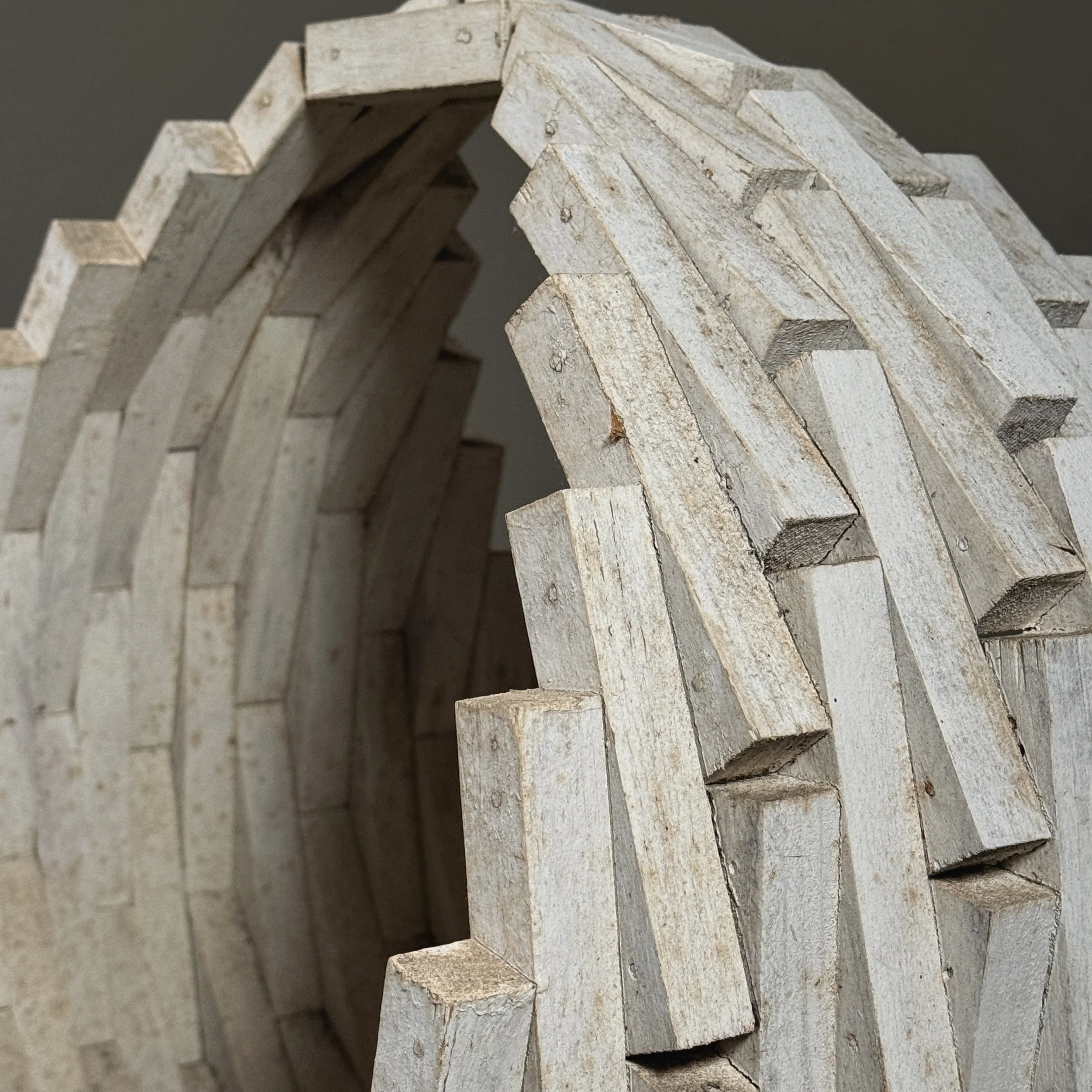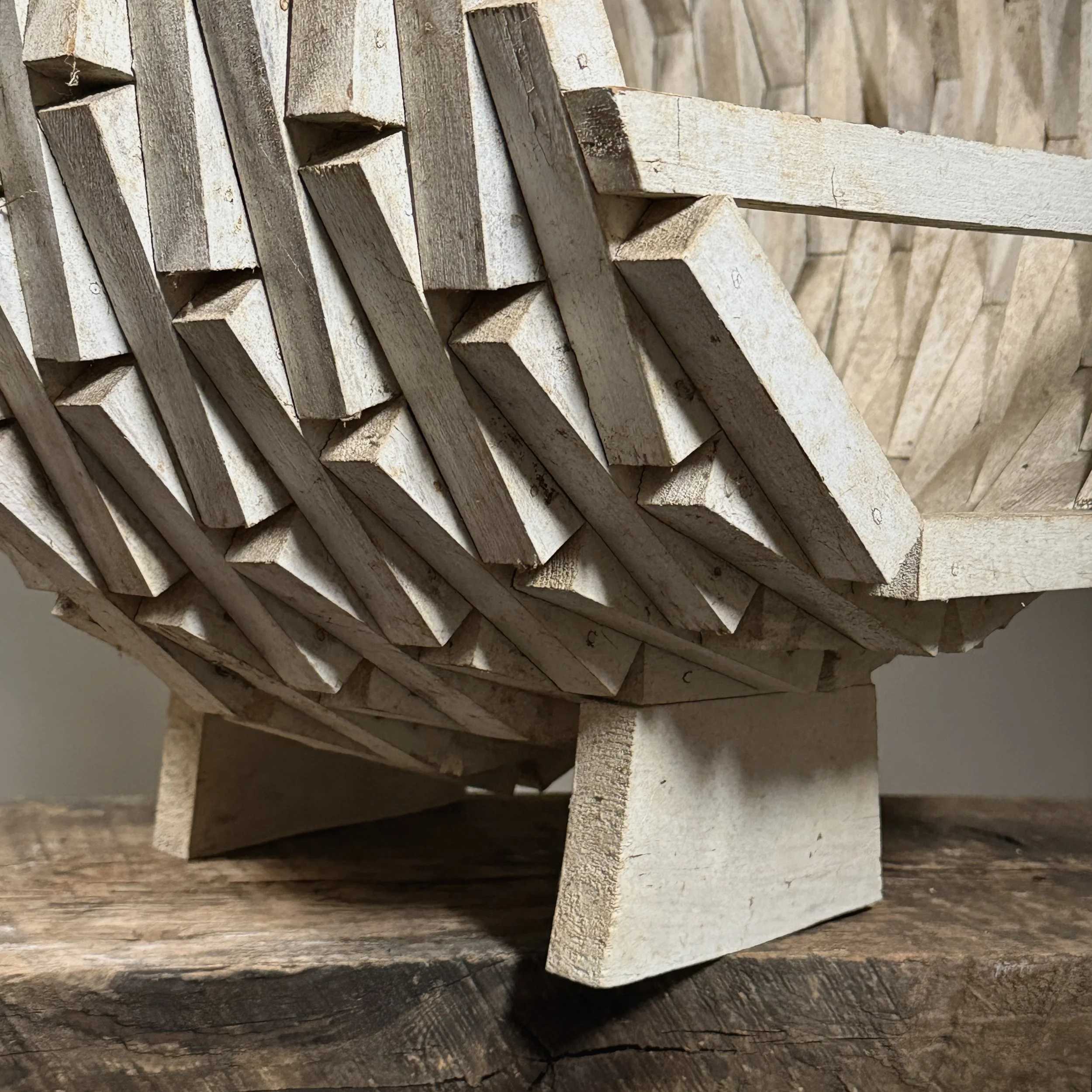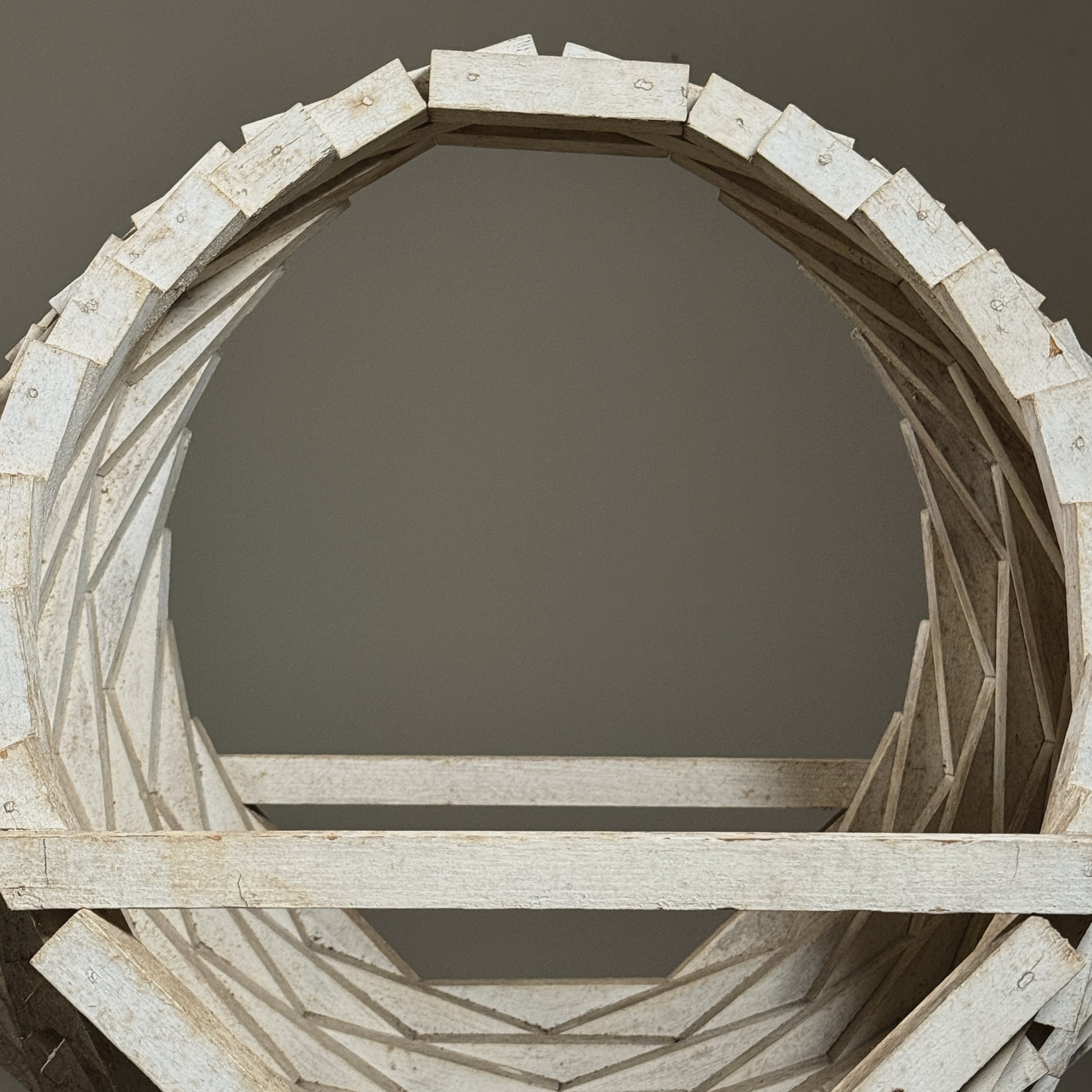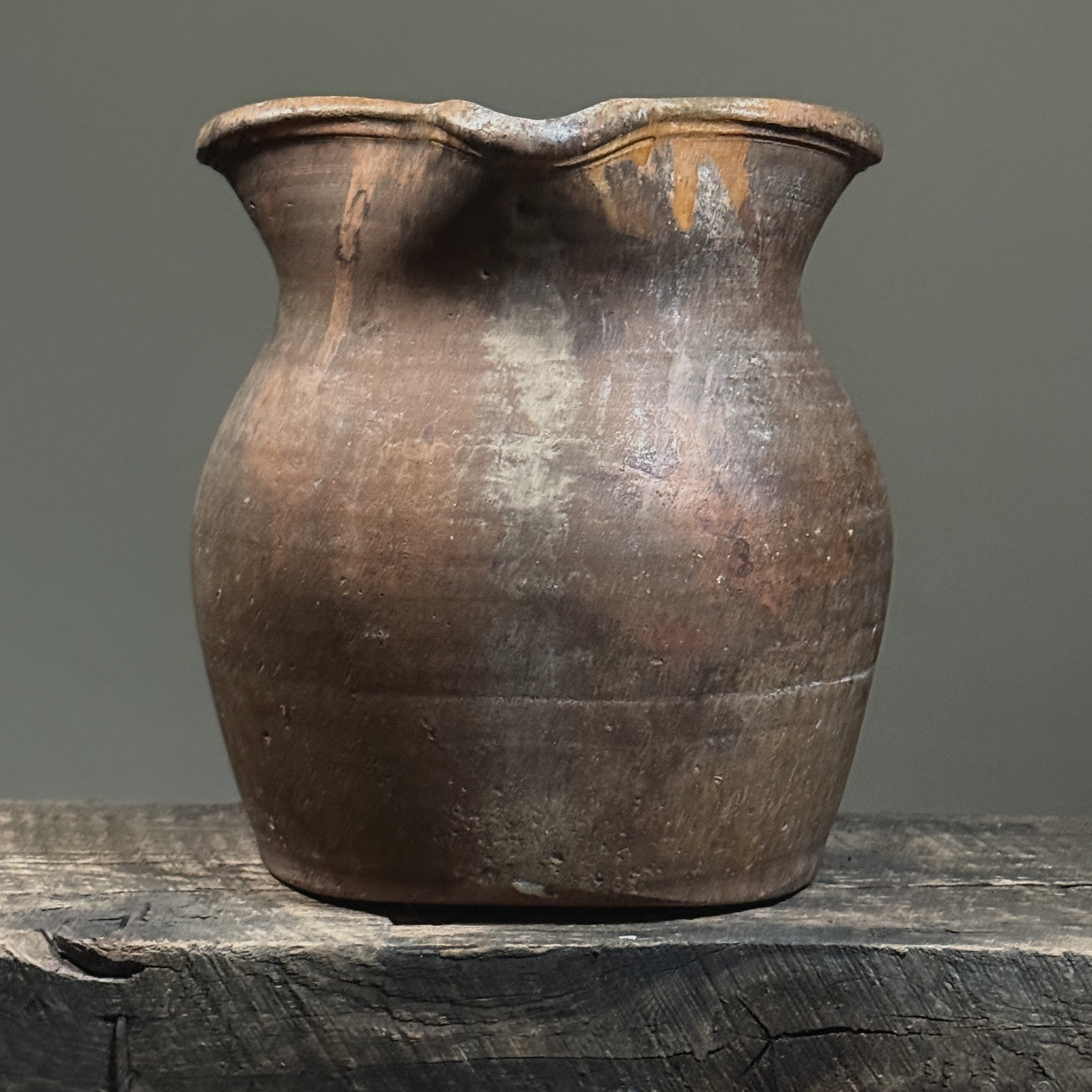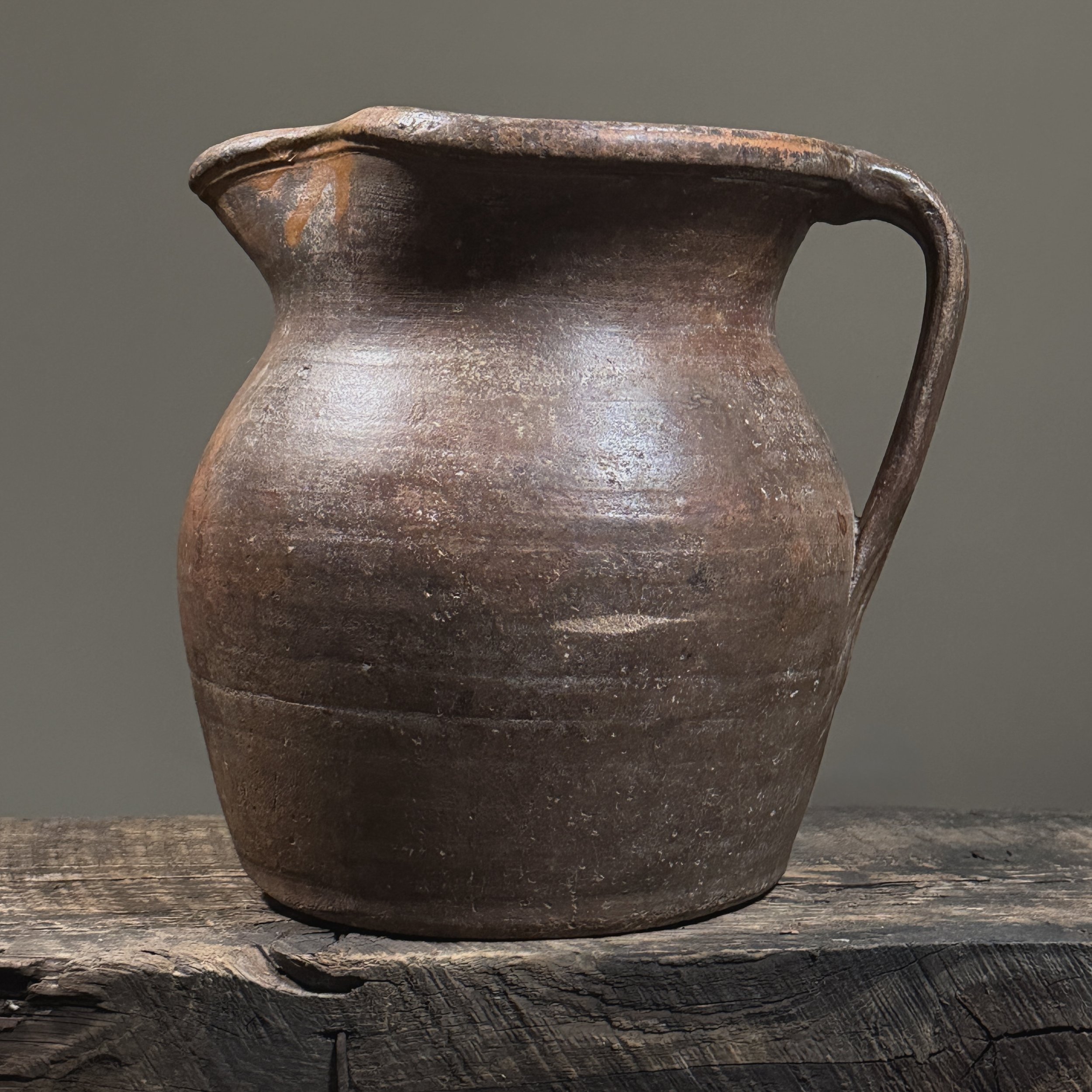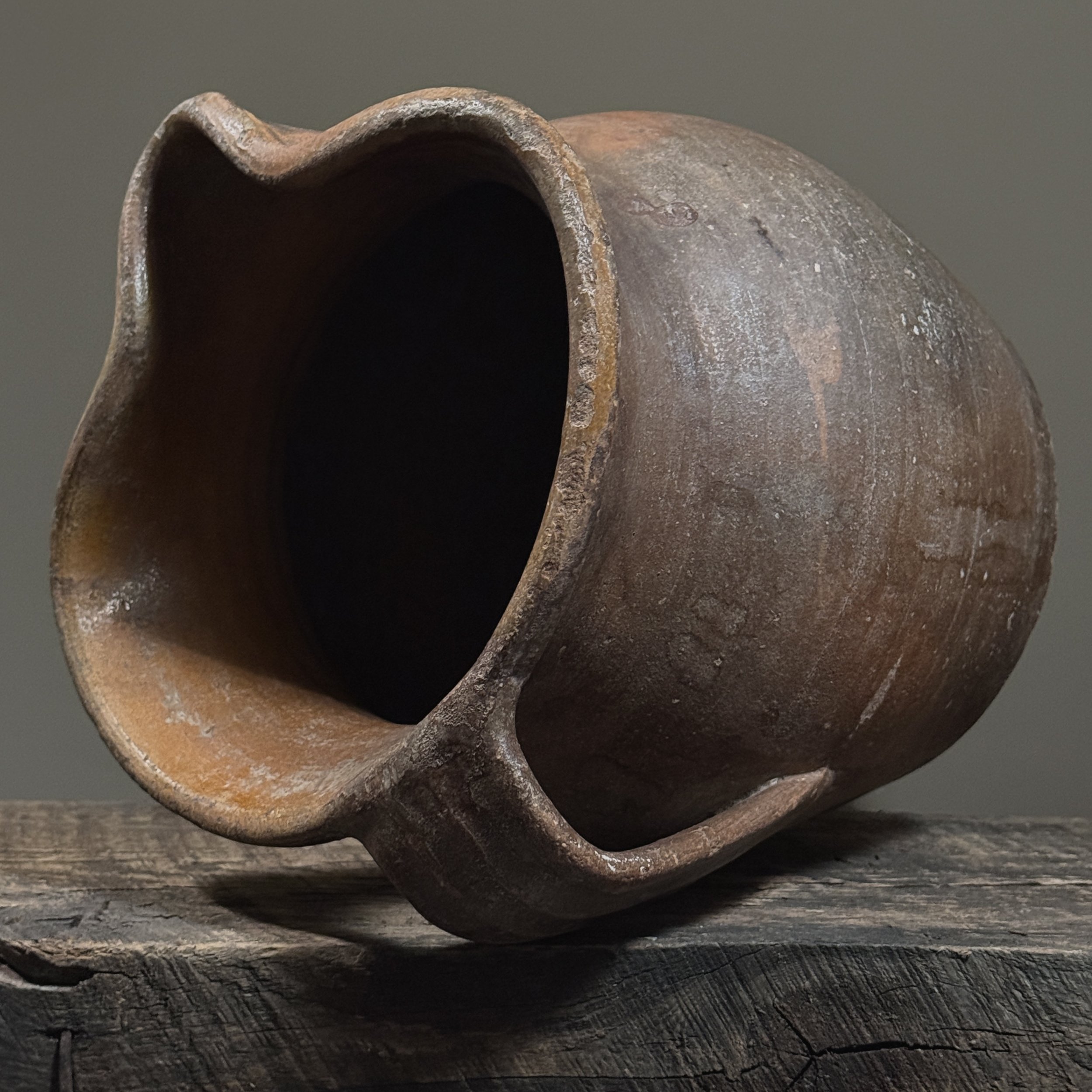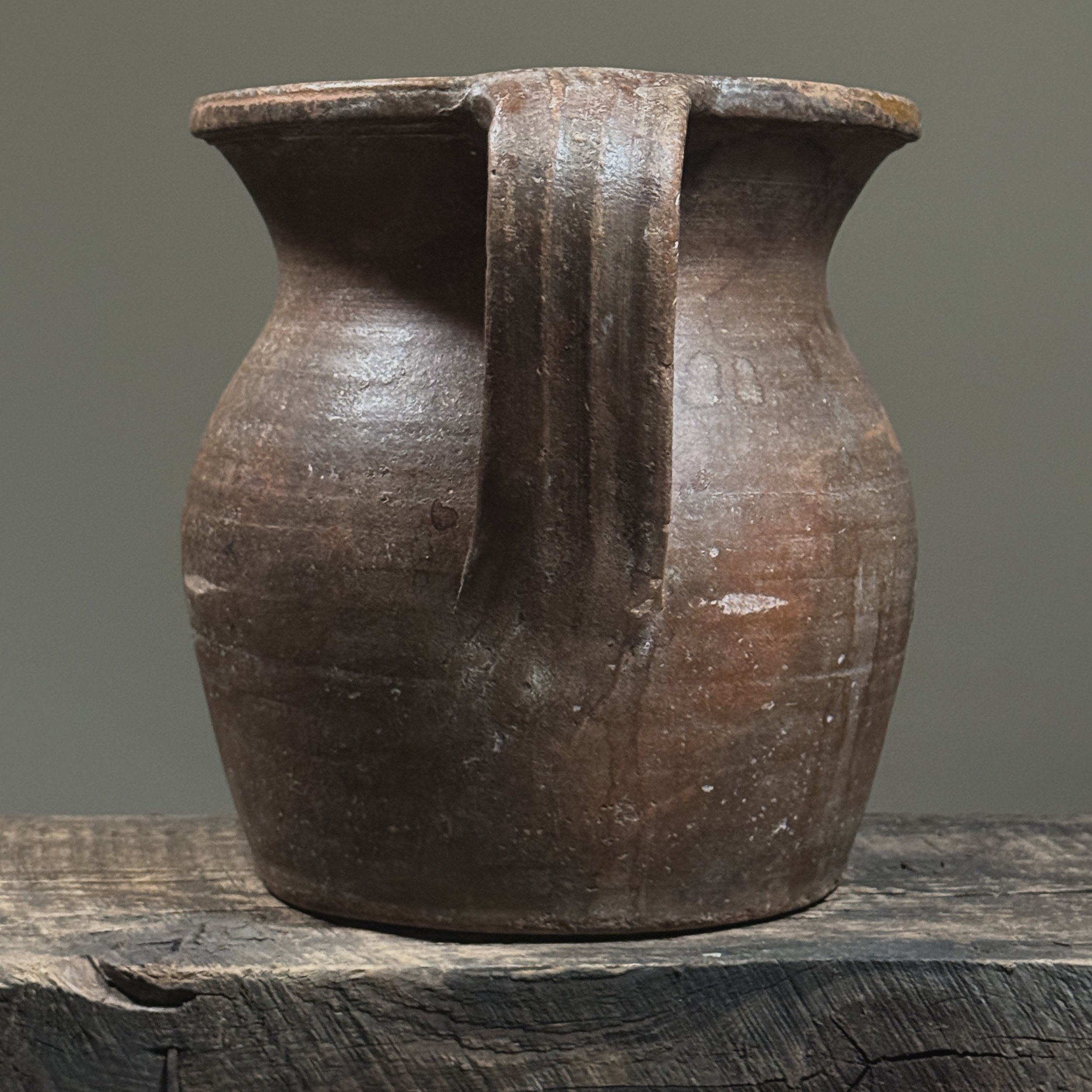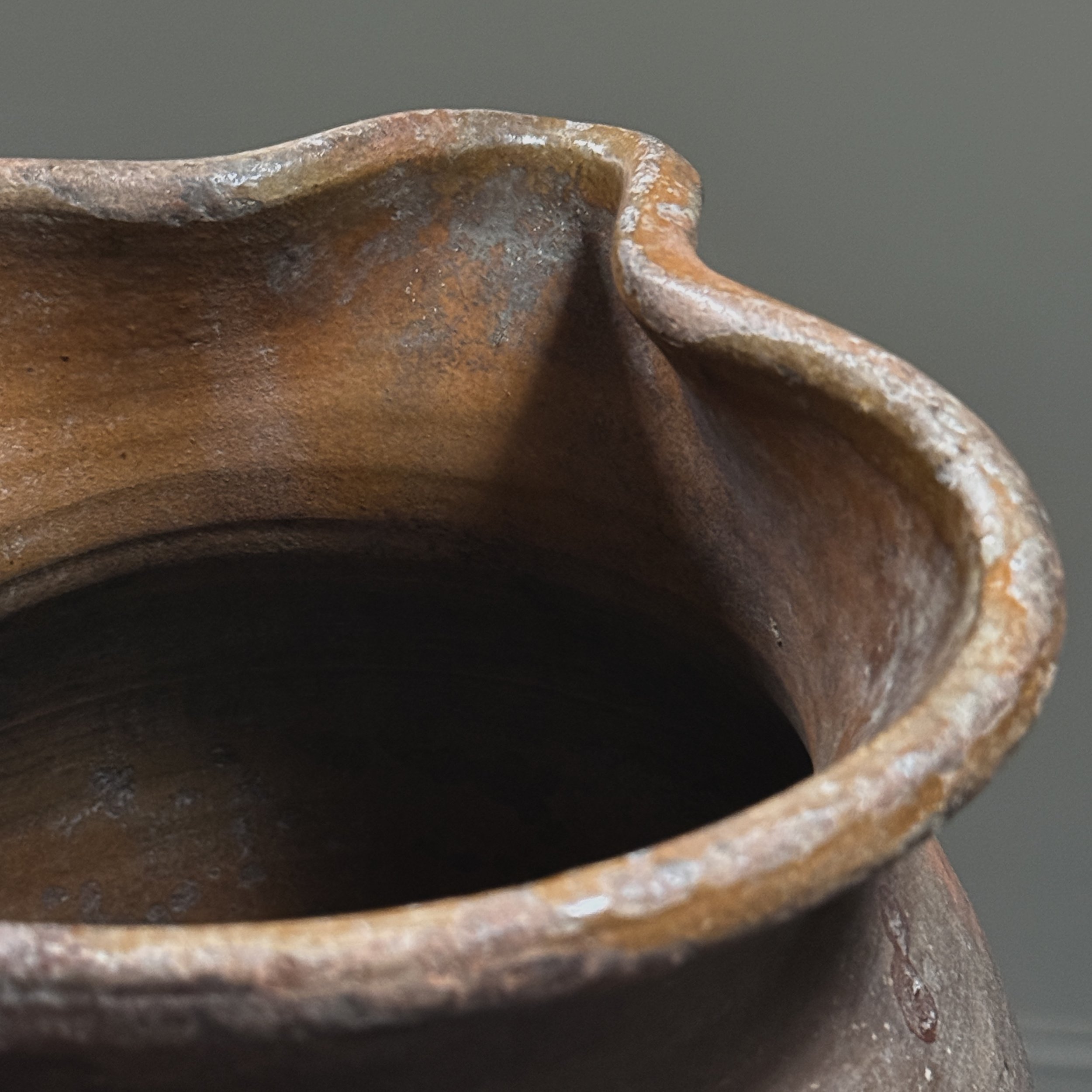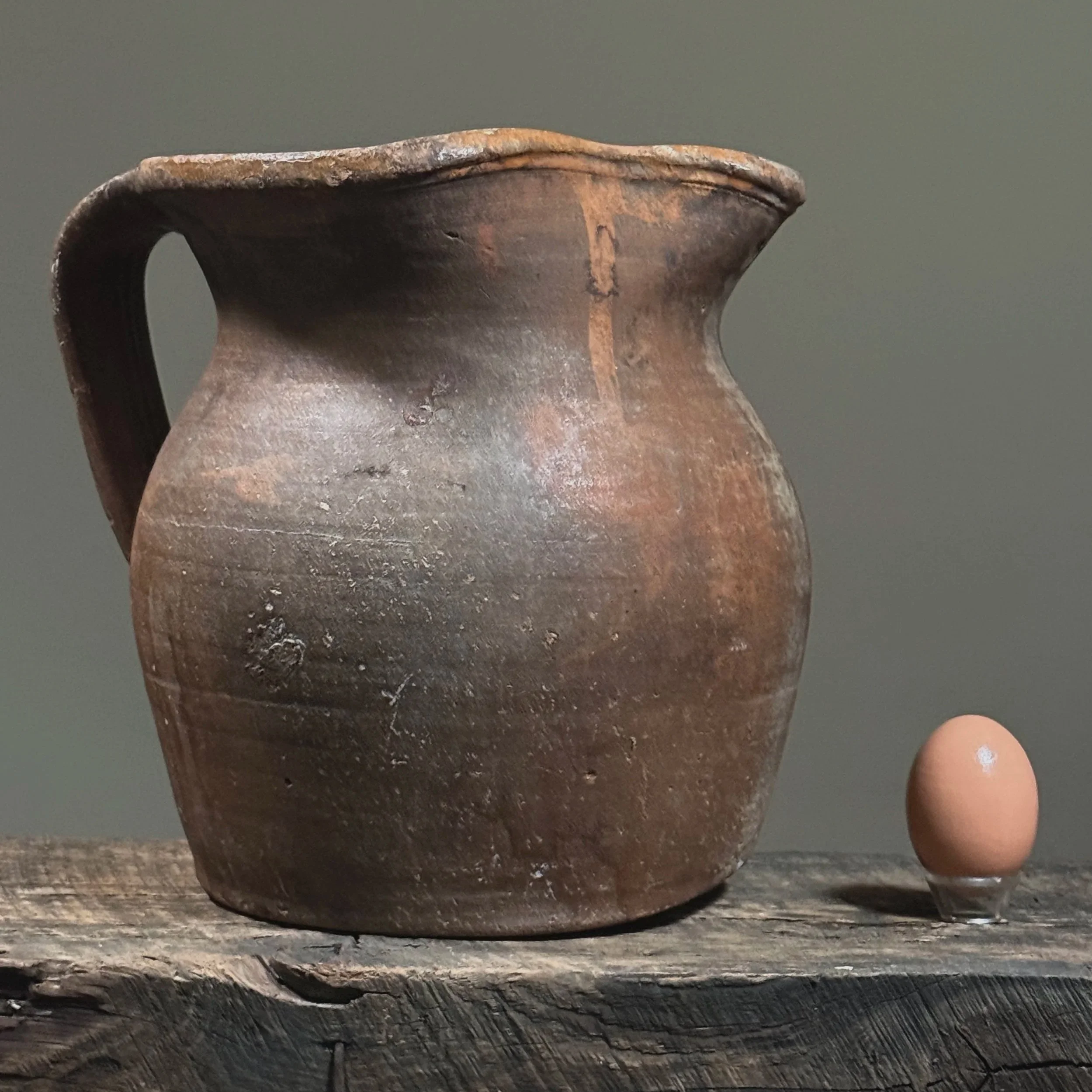 Image 1 of 8
Image 1 of 8

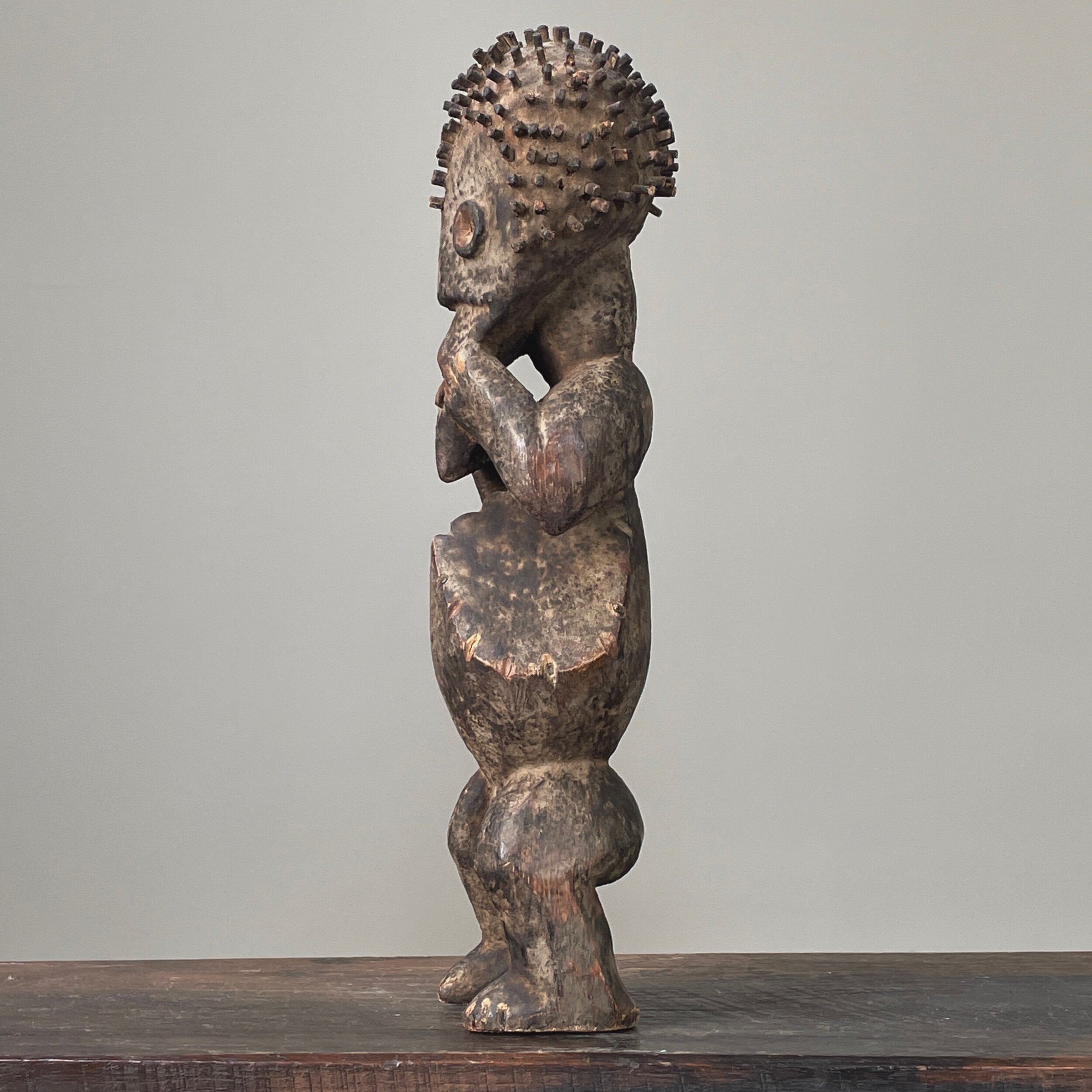 Image 2 of 8
Image 2 of 8

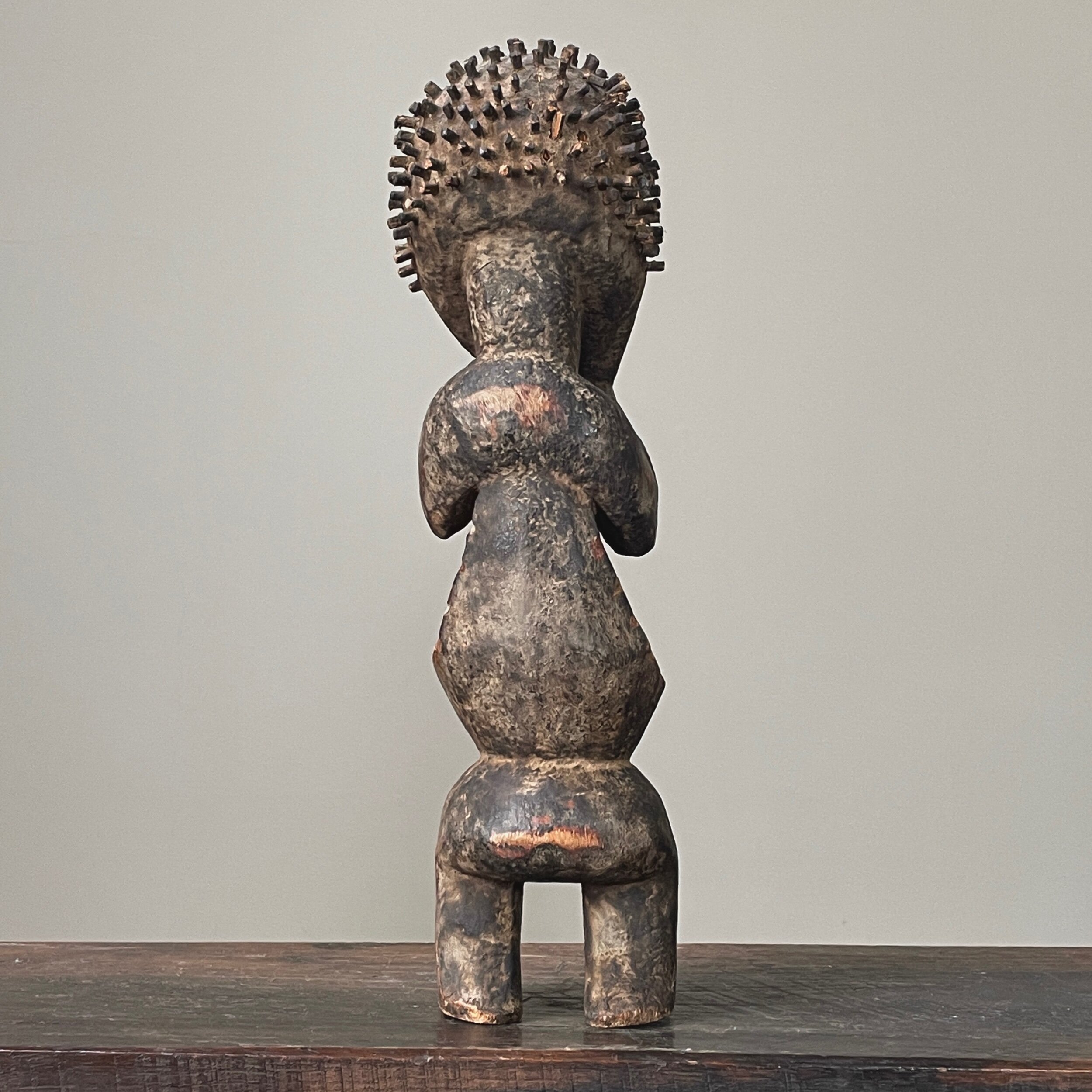 Image 3 of 8
Image 3 of 8

 Image 4 of 8
Image 4 of 8

 Image 5 of 8
Image 5 of 8

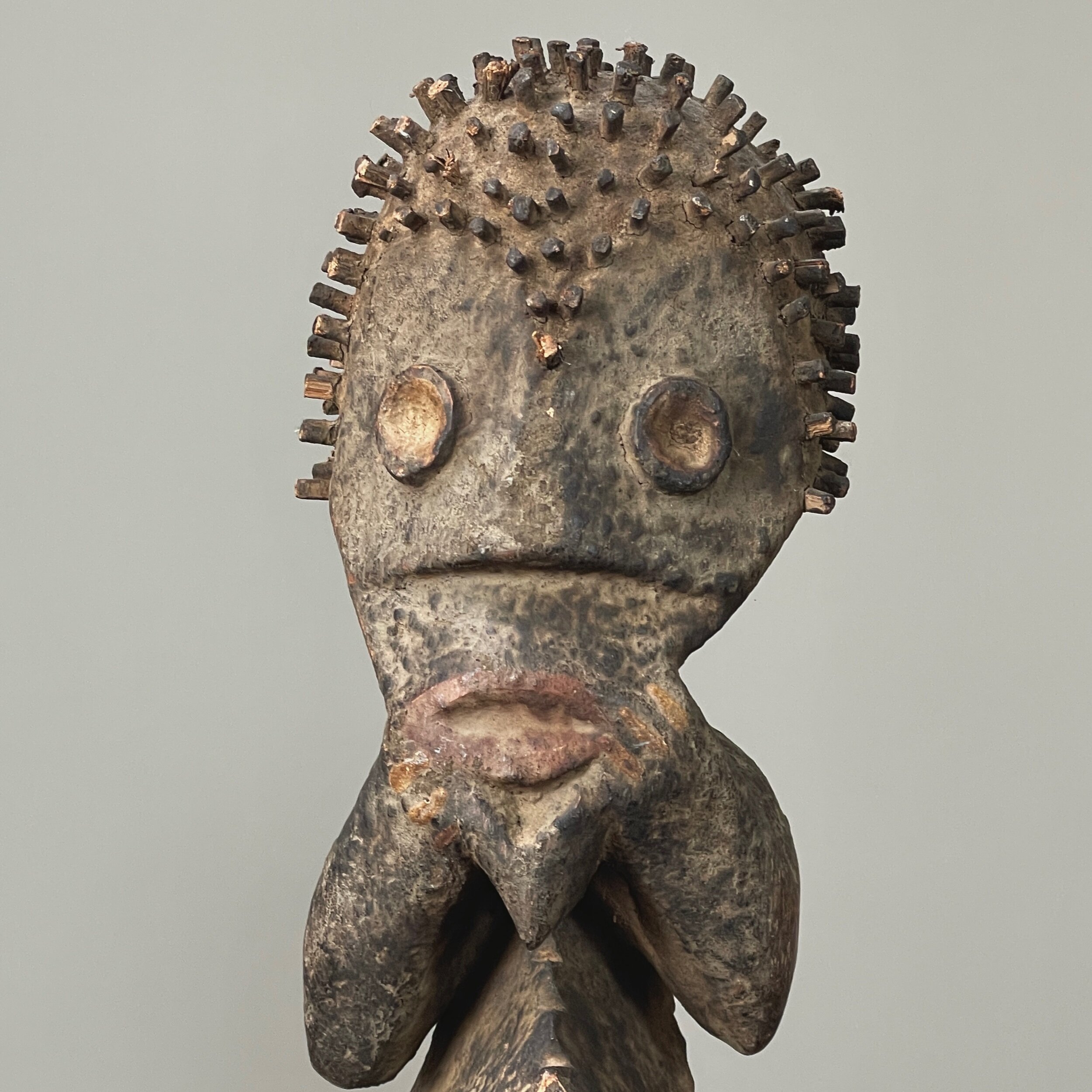 Image 6 of 8
Image 6 of 8

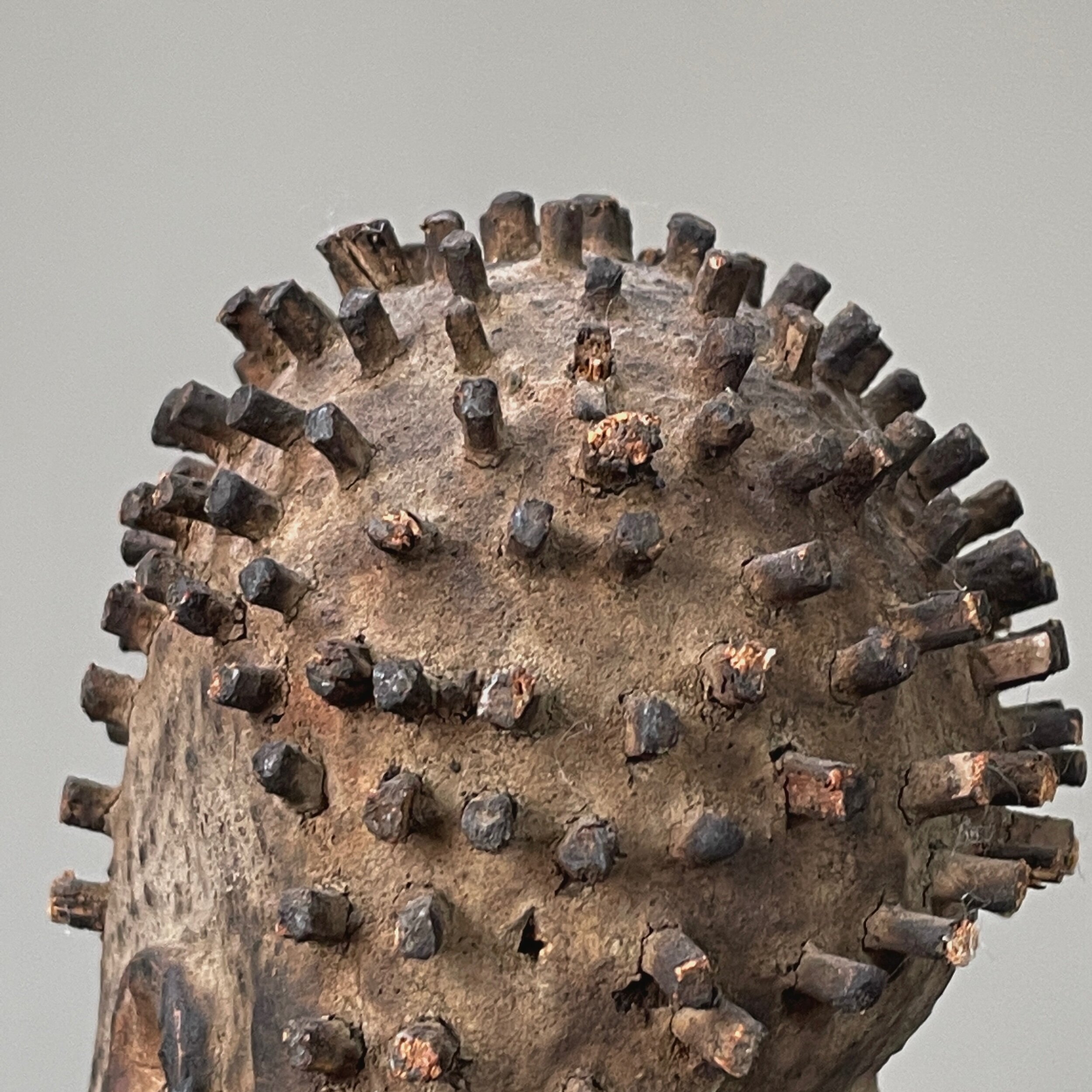 Image 7 of 8
Image 7 of 8

 Image 8 of 8
Image 8 of 8









Antique Mambila (Cameroonian) Ancestral Hand Carved Wood Figural Statue
Antique Mambila Ancestral Figural Hand Carved Wood Statue. In used condition consistent with wear and age. Some wooden pegs are missing on the head.
Size: 14" x 4" x 3"
Mambila ancestral spirits are believed to be instrumental forces in the welfare of the living. While generally idealized as benevolent and the source of moral authority, ancestors nevertheless may also have an ambivalent and fickle quality. Thus, they must be placated and their goodwill humored to provide the good things in life: fertility, health, prosperity. Ancestor figures are the concrete adobe for ancestral spirits, they are offered and treated with magical and medicinal substances to dispose them well toward their living descendants. The tadep figures are characterized by a heart-shaped face, enlarged head, outlined with wooden pegs.
Mambila art centers upon an association called suaga. It is primarily concerned with justice and supernatural cleansing within the community. The Mambila produced a considerable number of figures that are characterized by a heart-shaped face; pigments are often applied later. Mambila figures embody ancestors who, according to their beliefs, are responsible for the clan's wealth. The figures appear with bent legs and typical enlarged head outlined in wooden pegs. Mambila also make highly stylized animal masks. Masks and statues were kept hidden from the eyes of women in a net hung on the inside of a hut that was on stilts; it was guarded by the head of the family. The front wall of the hut was decorated with two figures, male on the right and female on the left, crowned by a rainbow and framed by the sun and the moon. Dancers celebrating the beginning and end of the agricultural cycle are led by a tribesman wearing a cephalomorphic helmet mask. He is often followed by a retinue of assistants wearing secondary masks in the shape or stylized animal heads, usually dog’s or crow’s. In general, women are excluded from these masquerades, both as actors and as spectators. Women dressed in rags and vegetation present their own version of the masquerade at a different time and place.
Antique Mambila Ancestral Figural Hand Carved Wood Statue. In used condition consistent with wear and age. Some wooden pegs are missing on the head.
Size: 14" x 4" x 3"
Mambila ancestral spirits are believed to be instrumental forces in the welfare of the living. While generally idealized as benevolent and the source of moral authority, ancestors nevertheless may also have an ambivalent and fickle quality. Thus, they must be placated and their goodwill humored to provide the good things in life: fertility, health, prosperity. Ancestor figures are the concrete adobe for ancestral spirits, they are offered and treated with magical and medicinal substances to dispose them well toward their living descendants. The tadep figures are characterized by a heart-shaped face, enlarged head, outlined with wooden pegs.
Mambila art centers upon an association called suaga. It is primarily concerned with justice and supernatural cleansing within the community. The Mambila produced a considerable number of figures that are characterized by a heart-shaped face; pigments are often applied later. Mambila figures embody ancestors who, according to their beliefs, are responsible for the clan's wealth. The figures appear with bent legs and typical enlarged head outlined in wooden pegs. Mambila also make highly stylized animal masks. Masks and statues were kept hidden from the eyes of women in a net hung on the inside of a hut that was on stilts; it was guarded by the head of the family. The front wall of the hut was decorated with two figures, male on the right and female on the left, crowned by a rainbow and framed by the sun and the moon. Dancers celebrating the beginning and end of the agricultural cycle are led by a tribesman wearing a cephalomorphic helmet mask. He is often followed by a retinue of assistants wearing secondary masks in the shape or stylized animal heads, usually dog’s or crow’s. In general, women are excluded from these masquerades, both as actors and as spectators. Women dressed in rags and vegetation present their own version of the masquerade at a different time and place.

